In this section
Democracy has been our guiding principle for 80 years
Before 1900
1791
Following Royal Assent on June 10, Lieutenant Governor Alured Clarke, in the absence of Lord Dorchester, declares the Constitutional Act to be duly effective on December 26, 1791. This Act lays the foundations of the parliamentary and electoral system of the time by establishing an executive council and a house of assembly that makes the government a representative body. The Constitutional Act allows all British individuals aged 21 and over to vote, including single women and widows who meet the electoral requirement of land or property ownership (in practice, however, this represents very few people). Although women have the right to vote, they are not allowed to run as candidates.
1792
Pursuant to Article 14 of the Constitutional Act of 1791, Lieutenant Governor Alured Clarke establishes 27 “counties” without any standardization. In the summer of 1792, during the first legislative elections in Lower Canada, 50 members are elected. The electoral period lasts seven weeks, running from May 24 to July 10, 1792. Because there is only one polling station in each electoral division, the election lasts a few days to give as many voters the chance to get to the polling station. Each vote is done publicly and orally, often in the presence of the candidates or their supporters. In electoral divisions that are entitled to two representatives, the voter presents two choices. There is no list of electors or ballot paper.

Province of Lower Canada circa 1800.
1840
Following the recommendations of the Durham Report of 1839, the Union Act is officially sanctioned in London on July 23, 1840. Lower Canada and Upper Canada are combined to form the Province of Canada (United Canada). A new Constitution is proclaimed in Montréal on February 10, 1841. Although they don’t have the same population at the time, Canada East and Canada West elect an equal number of MPs.
1849
Women lose the right to vote. The word “person ” is now understood to mean “male land or property owner.”
1853
A bill passes to increase parliamentary representation. The number of MPs is increased from 84 to 130. Equality is upheld between Lower Canada and Upper Canada with 65 representatives each. A new law removes the anomaly whereby electoral divisions with a population of 1,200 people have the same representation as those with a population of 2,000 to 3,000 people.
1855
The Municipalities and Roads Act of Lower Canada comes into force, forming the basis of the current municipal system and the administrative organization of the territory.
1861
The first election held using registers (lists) of electors compiled from municipal assessment files takes place in Québec.
1867
The Constitution Act comes into force on July 1, 1867. Under the Confederation, the Parliament of Québec is made up of a Legislative Assembly, a Legislative Council and a Lieutenant Governor. Legal voting age is 21.
During the 1867 provincial general elections held from August to September, there are 161,642 electors on the list of electors. Voter turnout is 46.84%.
1867-1942
During the 19th century and the first half of the 20th century, electoral power is vested in the Executive Branch, comprising the governor, the prime minister and the Clerk of the Crown in Chancery. The governor is responsible for convening the electorate and drawing the electoral map. The Clerk of the Crown in Chancery is responsible for managing electoral events in addition to their usual responsibilities, which include drafting the various acts, such as the convocation, prorogation and dissolution of Parliament. The accumulation of these tasks creates tension in the early 19th century, so the governor appoints a second clerk to oversee electoral matters. Following this, the Clerk no longer holds a seat on the Executive Council. Beginning in 1887, the duties of the Clerk of the Crown in Chancery is carried out by the Clerk of the Legislative Assembly, who receives a specific allowance for this task.
The following is a list of the Crown Clerks in Chancery from 1867 to 1942 and their appointment dates:
- Mr. Louis-H. Huot: as of 1867
- Mr. H.-Cyrias Pelletier: October 8, 18722
- Mr. Louis-H. Huot: June 5, 1875
- Mr. Louis-H. Huot and Mr. Louis Delorme: October 1, 1887
- Mr. Louis Delorme: December 9, 18873
- Mr. Eugène Rouillard: October 22, 1892
- Mr. Louis-Georges Desjardins: April 22, 1895
- Mr. Louis-P. Geoffrion: December 23, 1911
- Mr. Antoine Lemieux (Secretary to the Chancery): 1942
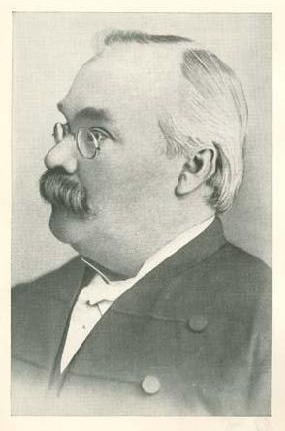
Mr. H.-Cyrias Pelletier2

Mr. Louis Delorme3
1868
Beginning in 1868, the Clerk of the Crown in Chancery is required to prepare a detailed election report.
1871
In the provincial general elections held in June and July 1871, there are 172,369 electors on the list of electors. Voter turnout is 34.96%.
1875
- The first provincial election by secret ballot in Québec is held in 1875. During these elections, there are 185,783 voters on the list of electors. Voter turnout is 47.70%. The first federal secret ballot is held in 1878.
- For the first time in Québec, a law is drafted to control election expenses.
1878
In the provincial general election of May 1, 1878, there are 217,825 electors on the list of electors. Voter turnout is 63.91%.
1881
In the provincial general election of December 2, 1881, there are 223,221 electors on the list of electors. Voter turnout is 44.53%.
1886
In the provincial general election of October 14, 1886, there are 234,844 electors on the list of electors. Voter turnout is 63.96%.
1890
In the provincial general election of June 17, 1890, there are 276,641 electors on the list of electors. Voter turnout is 58.18%.
1892
In the provincial general election of March 8, 1892, there are 294,335 electors on the list of electors. Voter turnout is 59.97%.
1897
In the provincial general election of May 11, 1897, there are 338,800 electors on the list of electors. Voter turnout is 67.34%.
1900
In the provincial general election of December 7, 1900, there are 350,517 electors on the list of electors. Voter turnout is 29.77%.
1903
Employers are now required to provide their employees with a few hours to go vote.
1904
In the provincial general election of November 25, 1904, there are 381,933 electors on the list of electors. Voter turnout is 29.97%.
1908
In the provincial general election of June 8, 1908, there are 415,801 electors on the list of electors. Voter turnout is 59.65%.
1912
In the provincial general election of May 15, 1912, there are 479,521 electors on the list of electors. Voter turnout is 61.45%.
1916
In the provincial general election of May 22, 1916, there are 485,936 electors on the list of electors. Voter turnout is 43.46%.
1918
On May 24, 1918, all Canadian women over 21 are granted the right to vote in federal elections, even if they are not yet eligible to vote in their province. In 1919, Canadian women obtain the right to run for the House of Commons. They exercise their right to vote for the first time in the 1921 federal election when Ms. Agnes Macphail is elected in Ontario’s Grey Southeast electoral division.
1919
On April 10, 1919, the government organizes the first referendum in Québec to consider legalizing the sale of wine and beer.4

Results from the 1919 referendum4
In the provincial general election of June 23, 1919, there are 480,120 electors on the list of electors. Voter turnout is 27.30%.
1920
- Parliament in Ottawa adopts universal suffrage at the federal level, abolishing the land and property ownership criteria.
- The position of Chief Electoral Officer of Canada is created.
1923
In the provincial general election of February 5, 1923, there are 513,224 electors on the list of electors. Voter turnout is 57.36%.
1927
In the provincial general election of May 16, 1927, there are 569,018 electors on the list of electors. Voter turnout is 56.38%.
1931
In the provincial general election of August 24, 1931, there are 641,323 electors on the list of electors. Voter turnout is 77.01%.
1935
In the provincial general election of November 25, 1935, there are 726,551 electors on the list of electors. Voter turnout is 75.91%.
1936
- Selective suffrage (a voting system in which only citizens who contribute directly to the government through taxes have the right to vote) is abolished in Québec. All male persons, 21 years of age or older, are allowed to vote.
- In the provincial general election of August 17, 1936, there are 734,025 electors on the list of electors. Voter turnout is 78.23%.
1939
In the provincial general election of October 25, 1939, there are 753,310 electors on the list of electors. Voter turnout is 75.74%.
1940
Women in Québec obtain the right to vote and to run in an election through a sanctioned law (PDF – in French) dated April 25, 1940 (the number of registered voters increases from 753,310 in 1939 to 1,865,396 in 1944). They exercise their right to vote for the first time in the by-election held on October 6, 1941, and in the general election on August 8, 1944. In the other nine provinces, women acquired this right between 1916 and 1925.
1944
In the provincial general election of August 8, 1944, there are 1,865,396 electors on the list of electors. Voter turnout is 72.13%.
1945
1945: A pivotal year
Since its inception in 1945, our institution has been dedicated to overseeing elections and referendums held in Québec. Its mandate is to ensure that the rules on controlling election expenses are followed, that electoral rights are fully exercised and that the democratic values of Québec society are promoted in an independent, neutral, impartial, and non-partisan manner. Here are some key dates that have defined Élections Québec.
- The first Chief Returning Officer is appointed for life by the Lieutenant Governor in Council (the executive branch of government). The Chief Returning Officer becomes the first person to permanently deal exclusively with electoral law enforcement and administration. At this time, their mandate mainly consists of electoral operations. Judge François Drouin is the first to hold the position, which he holds for 33 years, from June 7, 1945, to May 24, 1978.5 See table of election officials in Québec since 1945.
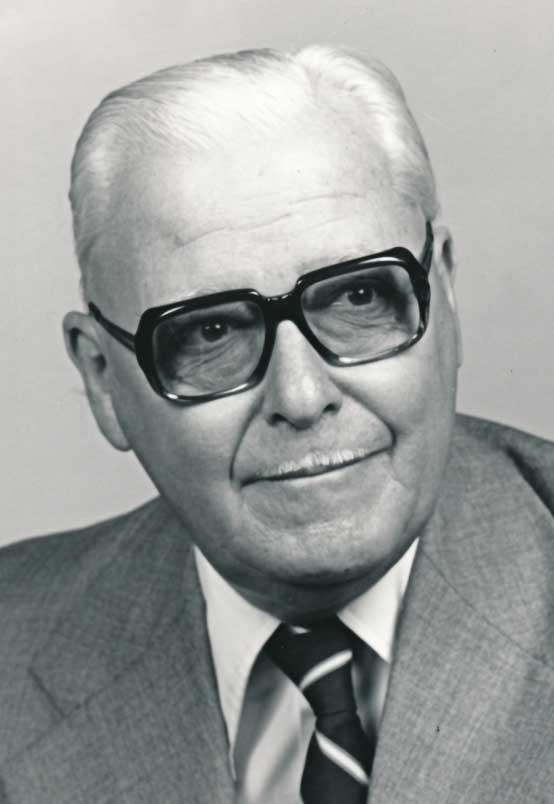
Mr. François Drouin5
- Advance voting applies only to certain categories of workers or members of the clergy. From this date forward, general elections are held on the same day throughout the province.
- From 1945 to 1963, the office of the Chief Returning Officer is located at 69 Grande Allée Est. The original buildings were demolished and the existing site is occupied by Government Buildings H and J (also referred to as the “Bunker”).6
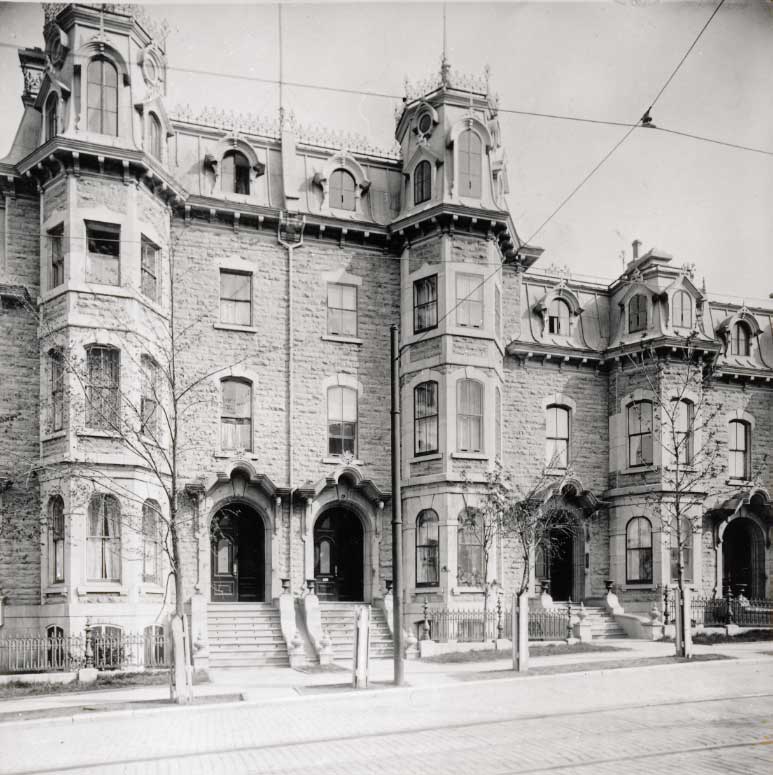
From 1945 to 1963, the offices of the Chief Returning Officer6
- The 1945 electoral map includes 92 electoral divisions and is used for the 1948 and 1952 general elections.
1947

Ballot paper belonging to Ms. Dennis James (Mae) O’Connor in 19477
In the July 23, 1947 by-election in the Huntingdon electoral division, Ms. Dennis James (Mae) O’Connor runs as the first female candidate.7.
1948
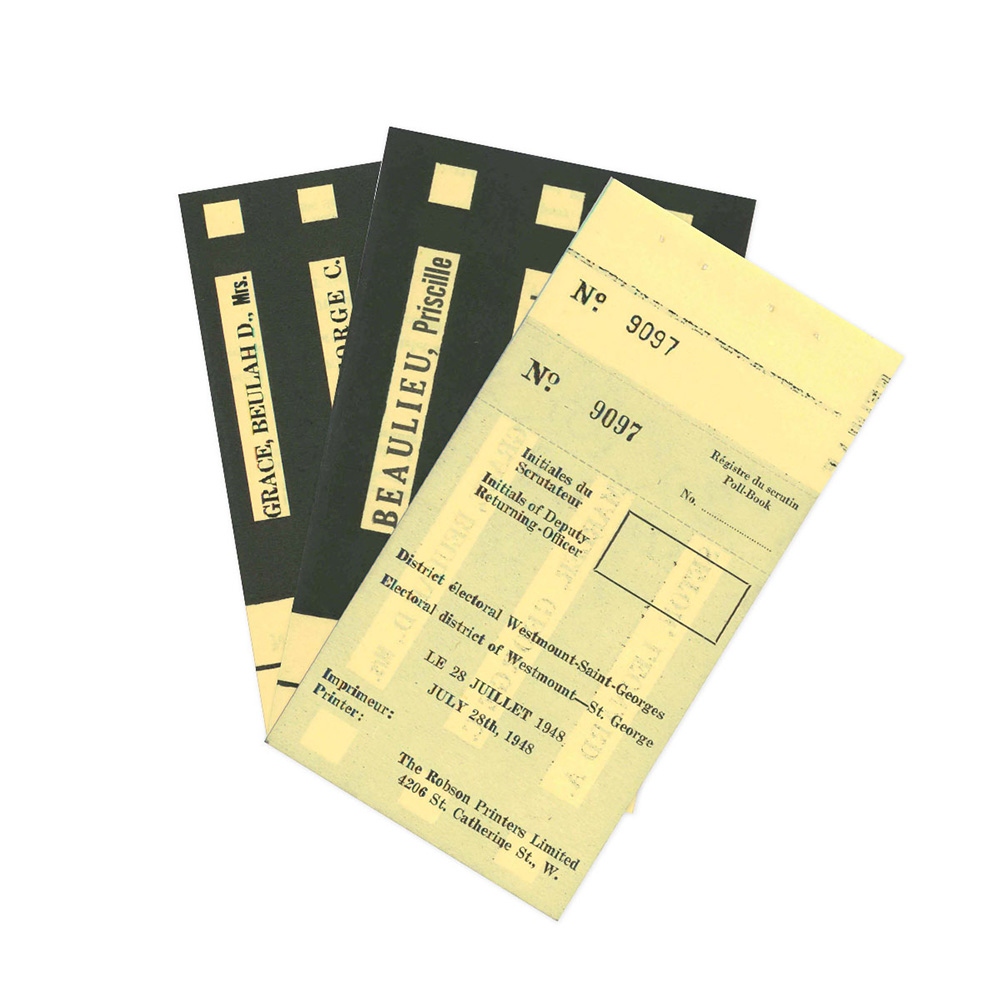
Ballot papers belonging to Ms. Beaulieu and Ms. Grace8
In the 1948 general elections, two women run for election: Ms. Priscille Beaulieu in the Îles-de-la-Madeleine electoral division and Ms. Beulah Devlin Grace in Westmount–Saint-Georges.8 During these elections, there are 2,036,576 voters on the list of electors and voter turnout is 75.21%. In the 1952 general election, there are three female candidates, followed by seven in 1956, but none in 1960. A woman is elected to the Assemblée nationale only in 1961.
1950 to 1974
1952
- Running in two “districts” at the same time is no longer permitted.
- In the provincial general election of July 16, 1952, there are 2,246,998 electors on the list of electors. Voter turnout is 75.86%.
1954
The electoral map now has 93 electoral divisions and is used for the 1956 general election.
1956
In the provincial general election of June 20, 1956, there are 2,393,360 electors on the list of electors. Voter turnout is 78.32%.
1960
- The electoral map is revised and now includes 95 electoral divisions. This new map is used for the 1960 and 1962 general elections.
- In the provincial general election of June 26, 1960, there are 2,608,439 electors on the list of electors. Voter turnout is 81.66%.
1961
Ms. Claire Kirkland Casgrain is the first woman elected to the Assemblée nationale in the by-election of December 14, 1961, in the Jacques-Cartier electoral division.9

Ms. Claire Kirkland Casgrain9
1962
- A committee formed of non-parliamentary experts, chaired by Mr. Fernand Grenier, is commissioned by the government to conduct a preliminary study to review the electoral map. The Grenier report includes several measures to improve the revision of the electoral map, including criteria for the delimitation of electoral divisions and a recommendation to entrust this responsibility to an independent body.
- In the provincial general election of November 14, 1962, there are 2,721,783 electors on the list of electors. Voter turnout is 79.59%.
1963
- The Chief Returning Officer is now appointed by resolution of the Legislative Assembly but remains a lifetime term. The Chief Returning Officer is now independent of political powers. This is a major turning point in the history of Québec democracy.
- The office of the Chief Returning Officer moves to the former Action Catholique building located at 915 boulevard Charest Est., in Québec City.10

The Chief Returning Officer of Québec moves to 915 boulevard Charest Est in 196310
In 1963, the voting age is lowered from 21 to 18. (The number of registered voters increases from 2,721,783 in 1962 to 3,222,302 in 1966.) These new voters exercise their right to vote for the first time in the by-elections on October 5, 1964. In general elections, however, they vote for the first time only on June 5, 1966. Despite the change in voting age, the minimum age required for electoral candidates and their agents is still 21.
1964
- In 1964, election expense provisions are introduced in Québec. For the first time in North America, the state reimburses a portion of election expenses under certain conditions.
- A candidate’s political affiliation now appears on the ballot paper.11

Ballot paper from 196411
The 1965 electoral map, delimited for the first time by an independent commission of the Legislative Assembly, increases the number of electoral divisions from 95 to 108. This map is used for the 1966 and 1970 general elections.
1966
In the provincial general election of June 5, 1966, there are 3,222,302 electors on the list of electors. Voter turnout is 73.56%.
1969
Indigenous people (men and women) gain the right to vote when the First Nations Voting Rights Act comes into force on May 2, 1969. Québec is the last province in Canada to pass a law like this one.
1970
In the provincial general election of April 29, 1970, there are 3,478,578 voters on the list of electors and voter turnout is 84.23%.
1971
The electoral map of Québec is now created by a permanent and autonomous body. However, it remains subject to approval by the Assemblée nationale. The Permanent Commission for the Reform of Electoral Districts (CPRDE) has three members, appointed by the Assemblée nationale, and is chaired by the Chief Electoral Officer.
1972
The new electoral map, delimited by the CPRDE, increases the number of electoral divisions from 108 to 110 and is used for the 1973 and 1976 general elections and the 1980 referendum.
1973
On April 1, 1973, an office of the Chief Returning Officer opens on Henri-Bourassa Boulevard in Montréal. Mr. François Drouin’s assistant, Mr. Paul-René Lavoie, is in charge. This office moves to 1200 avenue McGill College in the early 2000s and closes in October 2009.12

Office of the Chief Returning Officer on Henri-Bourassa Boulevard in Montréal12
- In the provincial general election of October 29, 1973, there are 3,764,111 electors on the list of electors. Voter turnout is 80.38%.
1975 to 1999
1975
The first act on the financing of political parties is overseen by the Chief Returning Officer and incorporated into the Election Act. This new act provides a state allowance to political parties present in the Assemblée nationale.
1976
- For the first time, more than one woman is elected to the Assemblée nationale du Québec. A total of five women are elected, but we’ll have to wait until 1985 for more than 10 women to sit in the Assemblée nationale, with 18 women elected.
- In the provincial general election of November 15, 1976, there are 4,023,743 electors on the list of electors. Voter turnout is 85.27%.
1977
- In 1977, the title of the Chief Returning Officer of Québec is changed to the Chief Electoral Officer of Québec. They are now appointed by recommendation of the prime minister, supported by two thirds of the members of the Assemblée nationale.
- Québec adopts the Act to govern the financing of political parties. One of the specifics of this law is that financial contributions to political parties are limited to voters only. The application of this Act is entrusted to an institution separate from the Chief Electoral Officer of Québec, namely the Directeur général du financement des partis politiques.
- In accordance with the new Act to govern the financing of political parties, the Directeur général du financement des partis politiques starts keeping a register of the parties, associations and independent candidates it authorizes. This register is now called Register of authorized political entities of Québec (RAPEQ).
1978

Swearing-in of Mr. Pierre-F. Côté in 197813
- On May 25, 1978, Pierre-F. Côté becomes Chief Electoral Officer of Québec. He is head of the institution for almost 20 years, until July 15, 199713. See table of election officials in Québec since 1945.
- The Chief Electoral Officer of Québec is mandated with assisting the presiding officers responsible for municipal elections.
- The Act Respecting the Standing Commission on Reform of the Electoral Districts is given a new name and role. It becomes the Commission de la représentation électorale. It is granted decision-making powers on the creation of the electoral map of Québec. Mr. Jean-Luc Lemieux14 is named the Commission’s first director general.
1979
The Act Respecting the Standing Commission on Reform of the Electoral Districts is given a new name and role. It becomes the Commission de la représentation électorale. It is granted decision-making powers on the creation of the electoral map of Québec. Mr. Jean-Luc Lemieux14 is named the Commission’s first director general.

Mr. Jean-Luc Lemieux14
1980
- The new electoral map, delimited by the Commission de la représentation électorale, increases the number of electoral divisions from 110 to 122 and is used for the 1981 general election.15
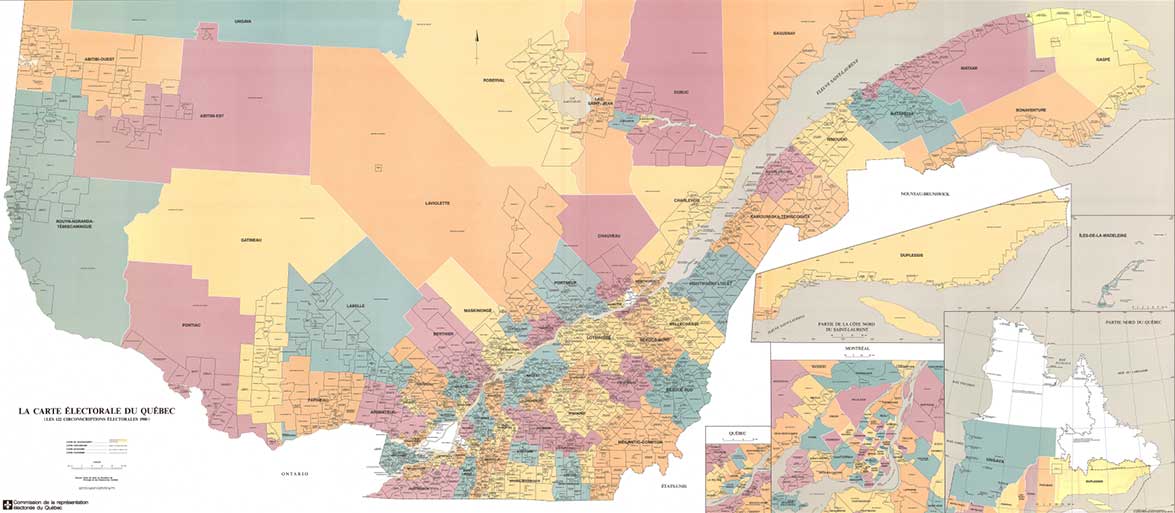
1980 Electoral Map15
- In March 1980, the office of the Chief Electoral Officer of Québec moves to 3460 rue de La Pérade in Québec City.16
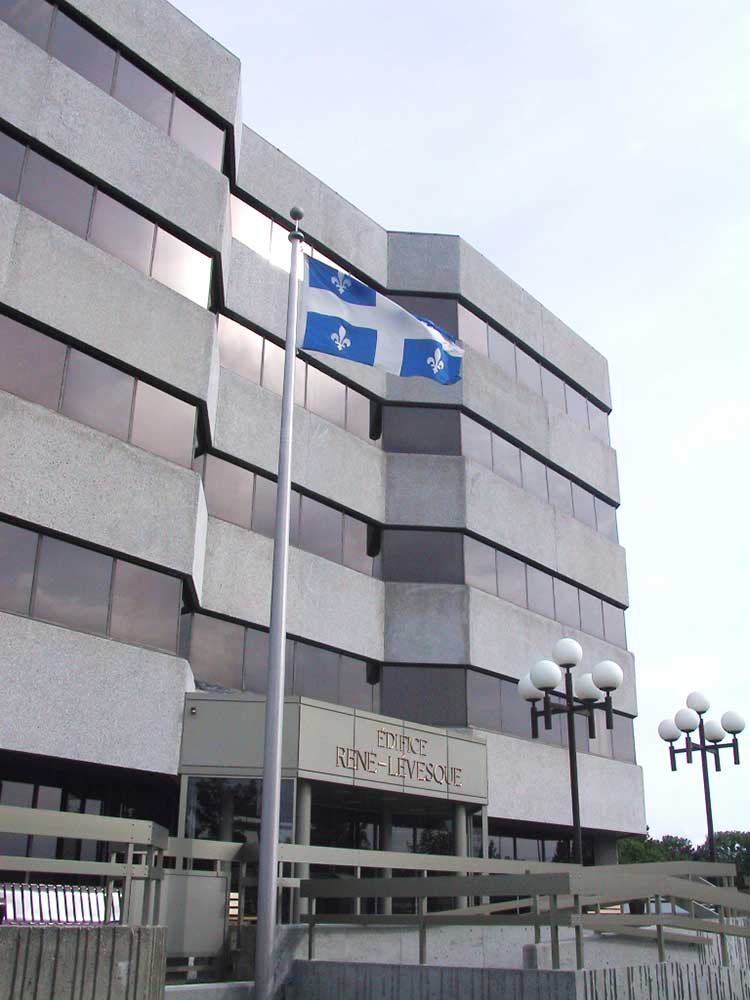
The office of the Chief Electoral Officer of Québec moves to 3460 rue de La Pérade in 198016
1980
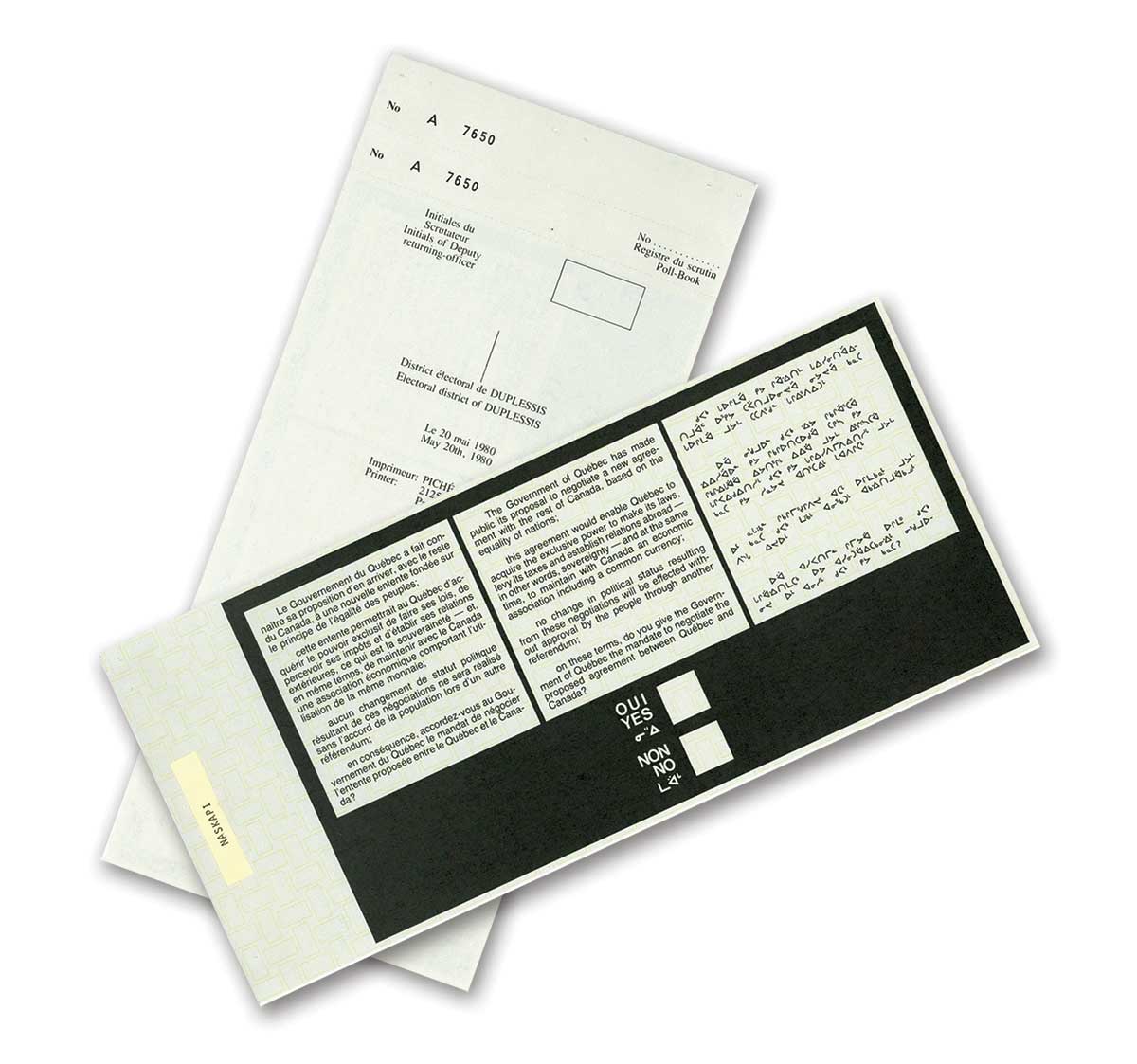
Referendum ballot paper for the 1980 referendum17
- In the 1980 referendum on sovereignty, 85.61% of Quebecers exercise their right to vote. Indigenous and Inuit communities have access to a trilingual ballot paper (in French, English and an Indigenous language). The referendum question is translated into nine Indigenous languages: Algonquin, Atikamekw, Cree, Inuktitut, Micmac, Mohawk, Montagnais (two dialects) and Naskapi.17
- The Chief Electoral Officer of Québec receives his first international visitors during the 1980 referendum.
- For the 1980 referendum, the Chief Electoral Officer of Québec sets up an information centre to help citizens become familiar with the provisions of the Referendum Act. In 1989, the Election Act officially provides for a permanent “Public Centre for Information on this Act.”
- The first step is taken toward depoliticizing the method of appointing returning officers. Returning officers are now appointed by the government, but on the recommendation of the Chief Electoral Officer. In 1981, for the first time in Québec’s electoral history, 122 returning officers are recruited through open competition. Their term of office is now five years and can be renewed.
- Judges, inmates and returning officers can now vote. Previously, returning officers only held the right to vote in the event of a tie, by casting the deciding vote. Abolishing this voting framework helps ensure greater neutrality of the position since the returning officer no longer has to publicly decide on the outcome of an election.
1981
In the provincial general election of April 13, 1981, there are 4,410,880 electors on the list of electors. Voter turnout is 82.49%.
1983
- On January 1, 1983, major electoral functions are grouped together under the authority of the Chief Electoral Officer of Québec. The positions of Directeur général du financement des partis politiques and Directeur général de la représentation are abolished and their responsibilities, both provincially and municipally, fall under the responsibility of the Chief Electoral Officer. Additionally, the Chief Electoral Officer becomes the ex-officio chair of the Commission de la représentation électorale, the organization responsible for the delimitation of provincial electoral divisions.
- To ensure complete neutrality in the process of appointing returning officers, they are now selected and appointed by the Chief Electoral Officer based on their qualifications, following an open competition.
1984
- A new Election Act is created and incorporated into the same legislative text as the Act respecting electoral lists and the Act to govern the financing of political parties.
- The Assemblée nationale mandates the Commission de la représentation électorale to conduct a study on a new voting system. The report, entitled Pour un mode de scrutin équitable — La proportionnelle territoriale, is released on March 28, 1984.
- On May 8, 1984, Québec is devastated following a shooting at the Assemblée nationale. The Chief Electoral Officer of Québec is particularly shaken, since a delegation is present that day and one of his employees dies in the shooting. The Directeur général des élections du Québec distribution centre is renamed the Centre de distribution Roger-Lefrançois in his honour. In the aftermath of this tragic event, René Lévesque comments: “True democracy is never a given; it must be earned, somehow regained and consolidated every day. It must be respected as well.”18 (Translated from French)

The Centre de distribution Roger-Lefrançois18
1985
- As of 1985, the Election Act now requires that advance polling stations and the offices of returning officers be accessible to electors with reduced mobility.
- The new electoral map, delimited by the Commission de la représentation électorale, comprises 122 electoral divisions and is used for the 1985 general election.
- The Commission de la représentation électorale publishes a report entitled La toponymie électorale au fil de l’histoire de la carte électorale du Québec.
- In October 1985, the Chief Electoral Officer of Québec makes its international debut in Belgium’s legislative elections.
- In the provincial general election of December 2, 1985, there are 4,579,921 electors on the list of electors. Voter turnout is 75.64%.
1987
- Financing rules now apply to election activities in municipalities with a population of 20,000 or more. Inspired by the rules that govern the election of deputies to the Assemblée nationale, candidates for mayor and municipal council positions must now comply with the new rules of transparency.
- The Act respecting electoral representation sets a minimum of 122 and a maximum of 125 electoral divisions. Additionally, the number of voters per electoral district is now based on the average number of voters per division relative to the total number of voters.
- On June 23, 1987, the Assemblée nationale mandates the Chief Electoral Officer of Québec with assisting Inuit communities of Northern Québec with preparing and holding a referendum on how to form and fund a working group to develop the constitution for a regional assembly. This referendum is held on October 1, 1987.
- The eighth Council on Governmental Ethics Laws (COGEL) is held in Québec City from September 27 to 30, 1987. The Chief Electoral Officer of Québec has been a member of COGEL since 1981.
1988
The new electoral map, delimited by the Commission de la représentation électorale, increases the number of electoral divisions from 122 to 125 and is used for the 1989 general election and the 1992 referendum.
1989
- The Election Act is amended so that the state allowance, previously limited to parties in the Assemblée nationale, is now extended to all authorized political parties according to the percentage of valid votes they obtained in the previous general election.
- The Chief Electoral Officer’s term of office is now limited to seven years, but can be renewed. The term of office for returning officers is extended from five to ten years.
- In the provincial general election of September 25, 1989, there are 4,670,690 electors on the list of electors. Voter turnout is 74.95%.
- The Chief Electoral Officer can vote and people who are outside Québec on election day (or who plan to be) can vote by mail.19
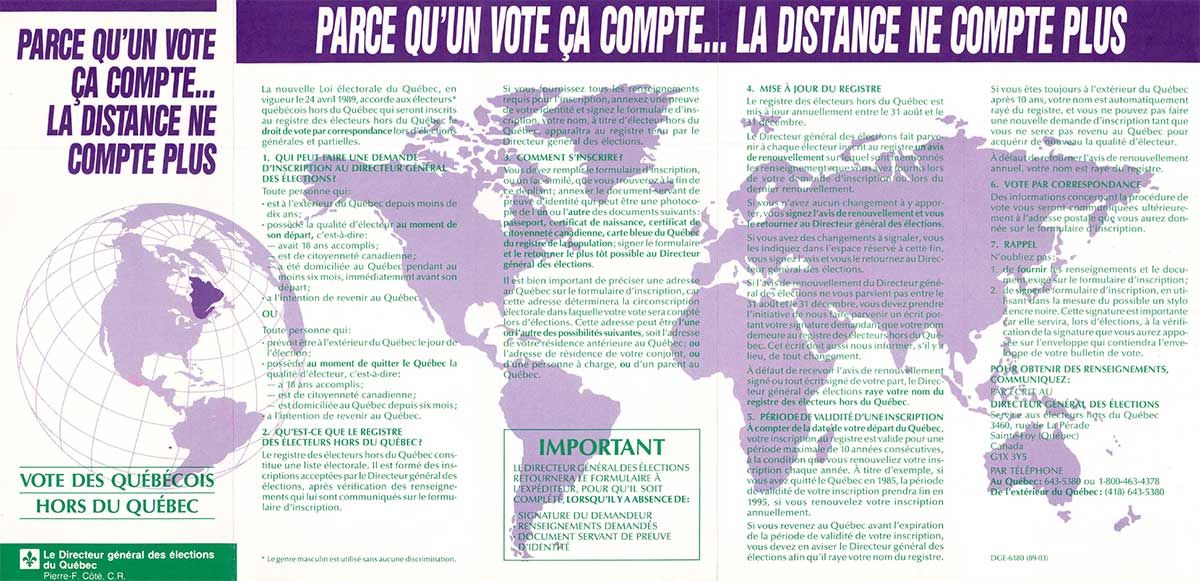
Information brochure published on voting outside Québec19
- People living in shelters and hospitals can vote at mobile polling stations. These polling stations move around so people can vote on the spot.
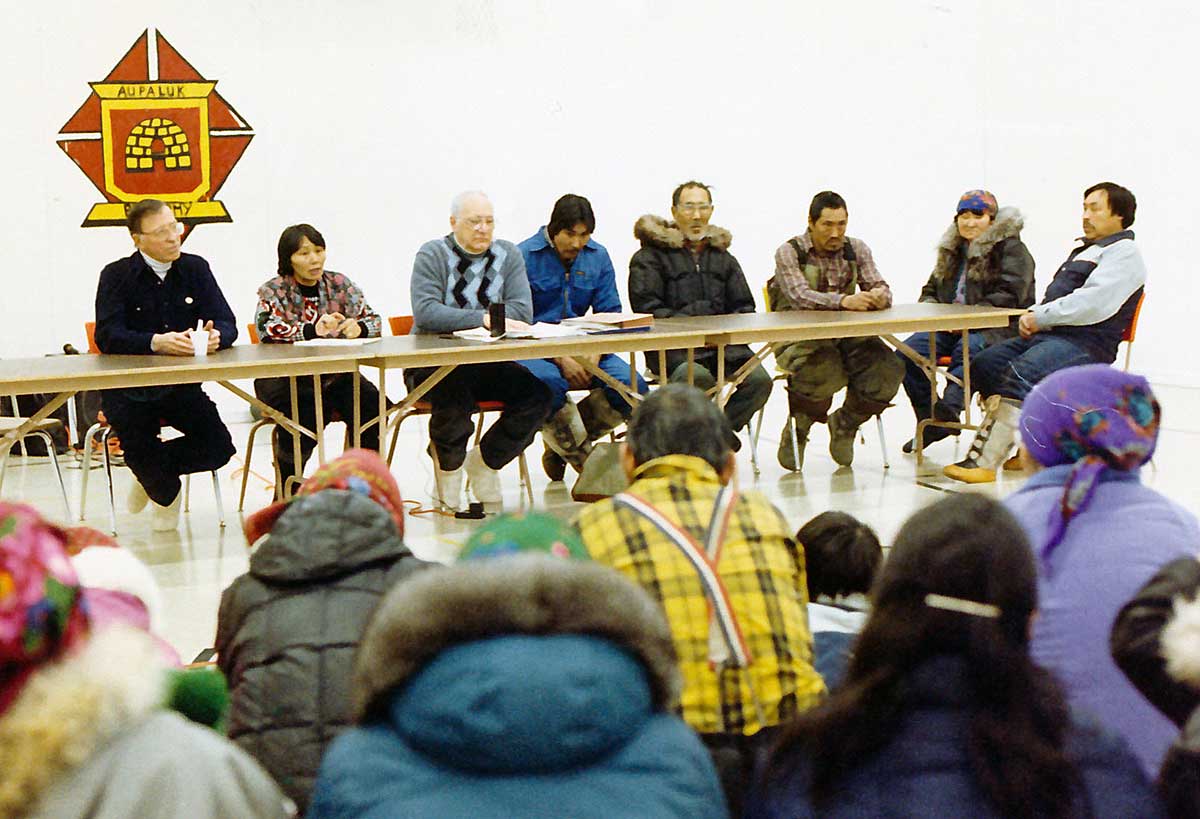
Tour of Northern Québec in 198920
- From February 6 to 14, 1989, in his role as a consultant to the Inuit community of Northern Québec, Mr. Pierre-F. Côté conducts an information tour throughout 14 northern municipalities. The purpose of this tour is to inform the public about the electoral procedures in place for the election to take place on April 10, 1989. During this tour, Côté is accompanied by Lieutenant Governor Gilles Lamontagne.20
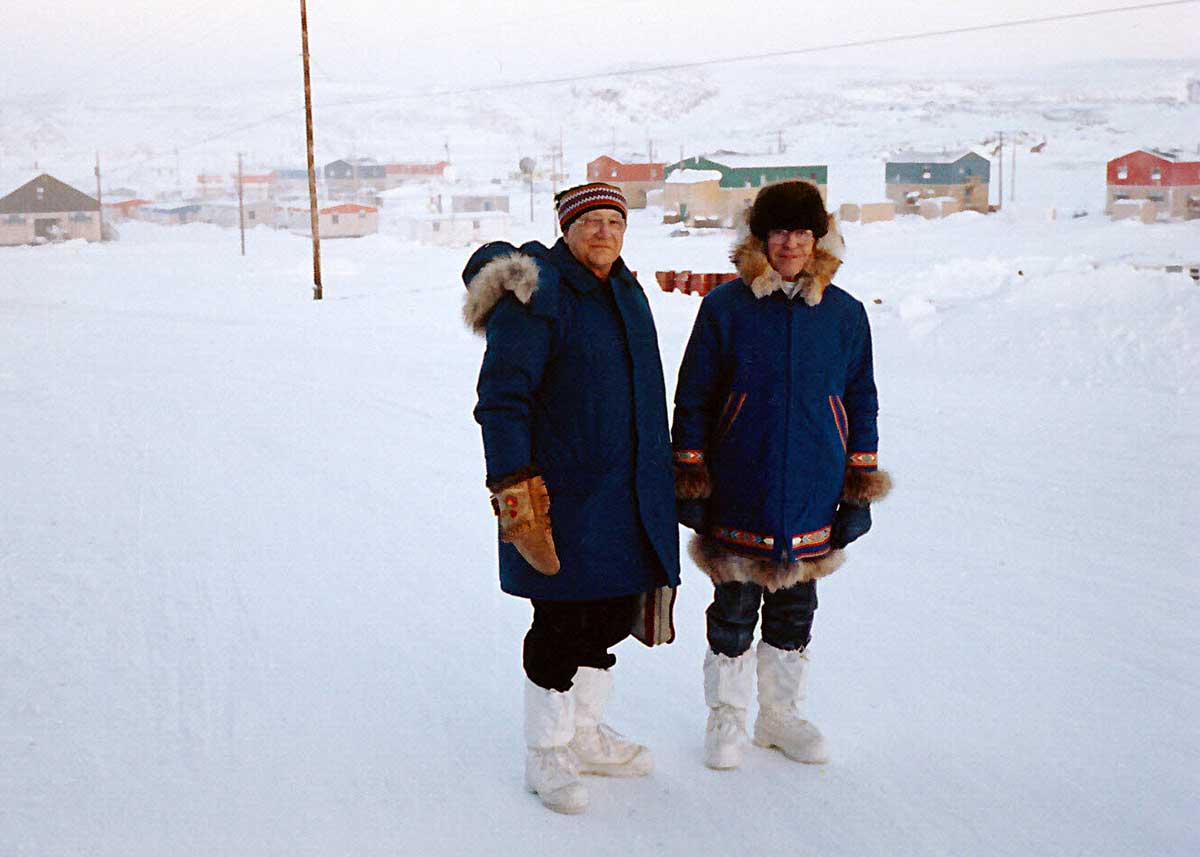
Tour of Northern Québec in 198920
1990
- From March 1990 to February 1991, the Organization of American States (OAS) carries out a mission to Haiti during the 1990-91 presidential election. The Chief Electoral Officer of Québec is mandated with coordinating this mission, and Mr. Pierre-F. Côté serves as the personal representative to the Secretary General of the OAS.
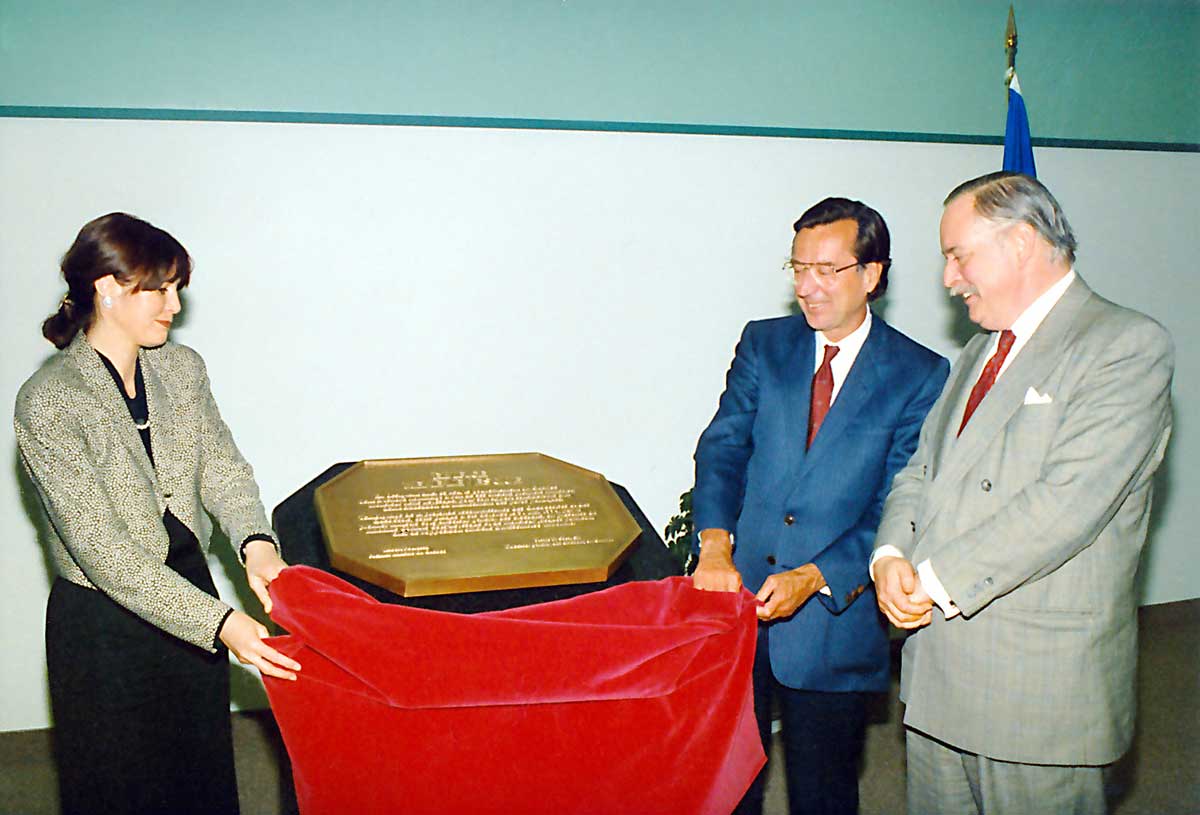
Inauguration of the édifice René-Lévesque and unveiling of the commemorative plaque in 199021
- On May 31, 1990, the building that houses the offices of the Chief Electoral Officer of Québec office changes its name to edifice René-Lévesque. This name is chosen to honour former Premier Lévesque, who died in November 1987, and his contribution to cleaning up political party financing.21
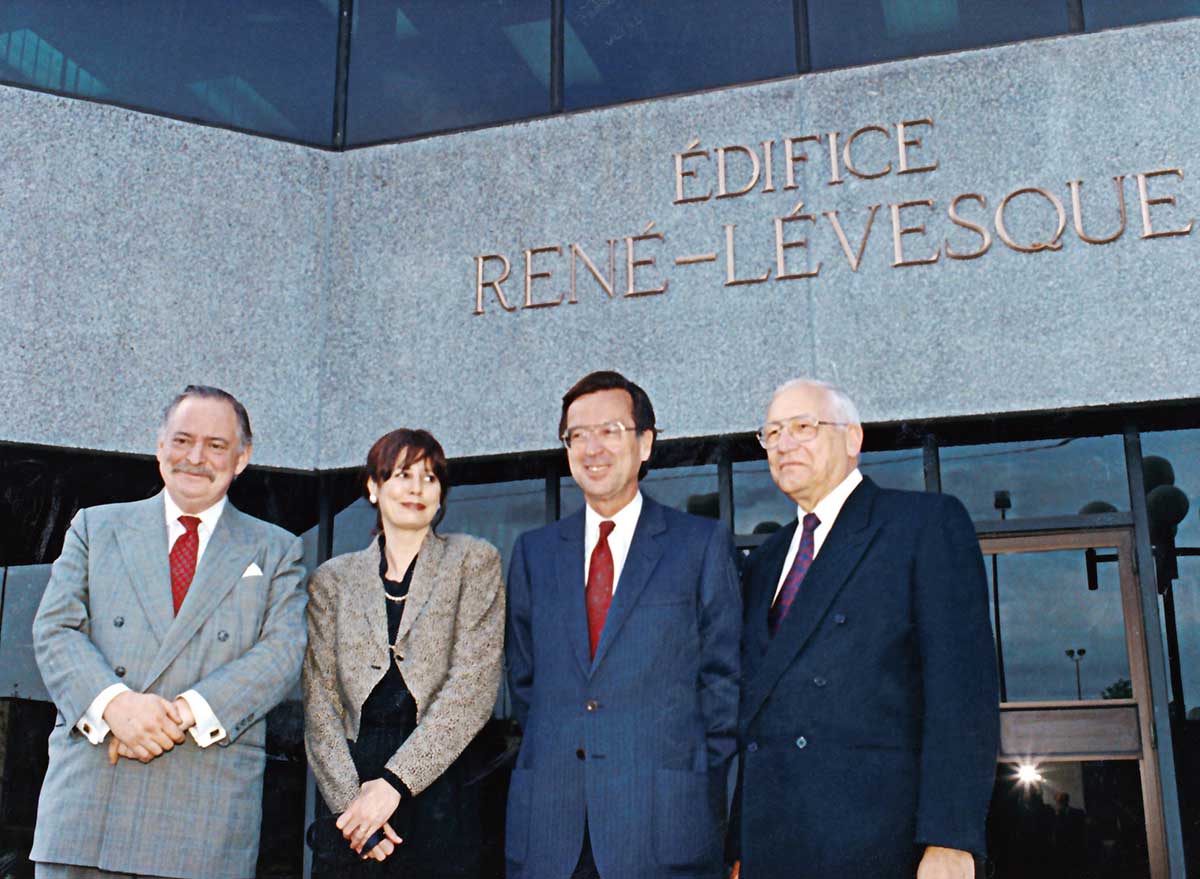
Inauguration of the édifice René-Lévesque and unveiling of the commemorative plaque in 199021
1991
Following a ruling by the Supreme Court of Canada, the legislator introduces a new principle to guide the delimitation of electoral divisions called effective representation. This new approach takes into account the relative equality of the votes of electors and respect for natural communities. Additionally, electoral boundaries are now established every other general election.
1992
- Amendments are made to the Election Act that give the Chief Electoral Officer of Québec the official power to act internationally.
- Election expenses of political parties become subject to reimbursement by the state at a rate of 50% of the expenses incurred and paid in accordance with the Election Act.
- Elementary and secondary schools are given the opportunity to hold their student council elections according to the Québec electoral system. Participating schools can receive electoral materials provided by the Chief Electoral Officer of Québec. This educational activity, jointly sponsored by the Ministère de l’Éducation and the Chief Electoral Officer, is an opportunity to educate youth on democratic values in Québec.
- In August 1992, federal and provincial governments as well as representatives of Indigenous nations agree on a constitutional amendment to reform the Canadian Constitution (the Charlottetown Accord). During a Canada-wide referendum campaign, 82.76% of Quebecers vote on this agreement.
- A new electoral map, delimited by the Commission de la représentation électorale, has 125 electoral divisions and is used for the 1994 and 1998 general elections as well as the 1995 referendum.22

1992 Electoral Map22
- On May 26, 1992, the bicentennial of Québec’s parliamentary institutions is celebrated to honour the first elections of the Assemblée nationale in 1792. Mr. Pierre-F. Côté takes this opportunity to launch two issues of La revue électorale.
1993
- The Code of penal procedure now states that the Chief Electoral Officer of Québec is responsible for maintaining the proceedings of the criminal clerk’s office. Since then, 2,246 criminal proceedings have been instituted: 170 under the Referendum Act, 736 under the Elections Act, 1,326 under the Municipal Elections and Referendums Act and 14 under the School Elections Act.
- The Chief Electoral Officer of Québec is mandated to produce an opportunity and feasibility study on creating a permanent list of electors (PLE) which would be used for provincial, municipal and school board elections. The PLE is then developed using data collected during the census that preceded the 1995 referendum. It is introduced on June 1, 1997, and is first used for municipal elections in November 1997 and for provincial general elections in November 1998.
1994
The general election of September 12, 1994, results in a tie-in the Saint-Jean electoral division. Voters in Saint-Jean return to the polls on October 24, 1994. This is the first time that an election results in a tie, and election procedures are adapted to these exceptional circumstances. During these elections, there are 4,893,465 voters on the list of electors. Voter turnout is 81.58%.
1995
- The Chief Electoral Officer of Québec launches its first website.23

The Chief Electoral Officer of Québec website over the years23
- On October 30, 1995, the Government of Québec holds a second referendum on sovereignty. A total of 93.52% of people exercise their right to vote, which is the highest voter turnout in Québec history.24
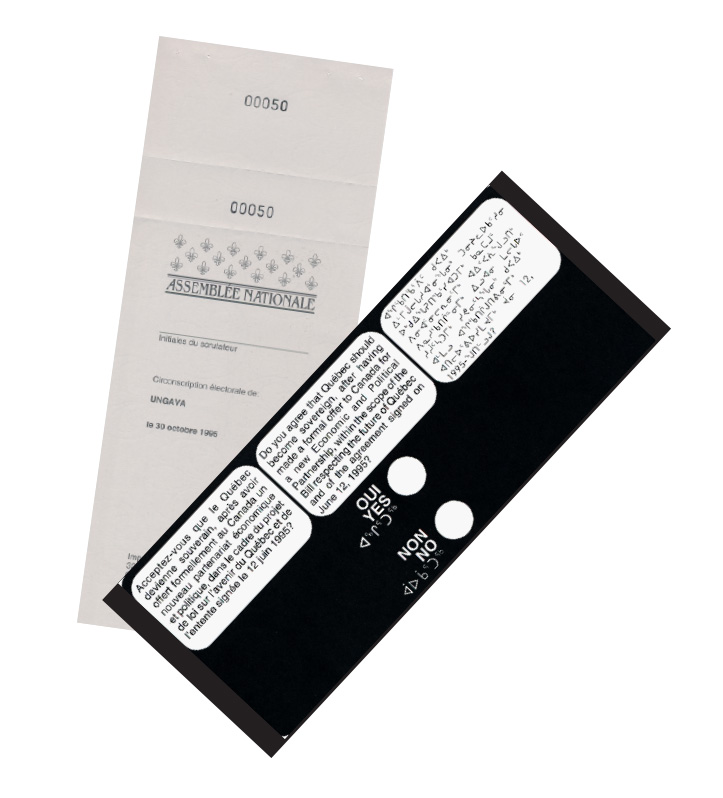
Referendum ballot paper for the 1995 referendum24
1997
Following the departure of Mr. Pierre-F. Côté, Mr. François Casgrain becomes Chief Electoral Officer and Chair of the Commission de la représentation électorale for a six-month term. This term is renewed once and he remains in office from July 16, 1997, to July 12, 1998.25 See table of election officials in Québec since 1945.

Mr. François Casgrain25
1998
- On June 14, 1998, the first general election is held for the commissioners of the new English and French school boards. These elections are conducted entirely under the responsibility of the Chief Electoral Officer of Québec. Voter turnout is 15.4%.
- In the provincial general election of November 30, 1998, there are 5,254,482 electors on the list of electors. Voter turnout is 78.32%.
- Mr. Jacques Girard becomes Chief Electoral Officer and Chairman of the Commission de la représentation électorale on July 13, 1998. Shortly after beginning his term, he dies on April 10, 1999.26 See table of election officials in Québec since 1945.

Mr. Jacques Girard26
- The Chief Electoral Officer of Québec publishes a document entitled Réflexions sur le financement politique municipal au Québec.
1999
- On April 21, 1999, Mr. Jean Jolin becomes Chief Electoral Officer and Chairman of the Commission de la représentation électorale for a six-month term. He serves until November 2, 1999.27 See table of election officials in Québec since 1945.
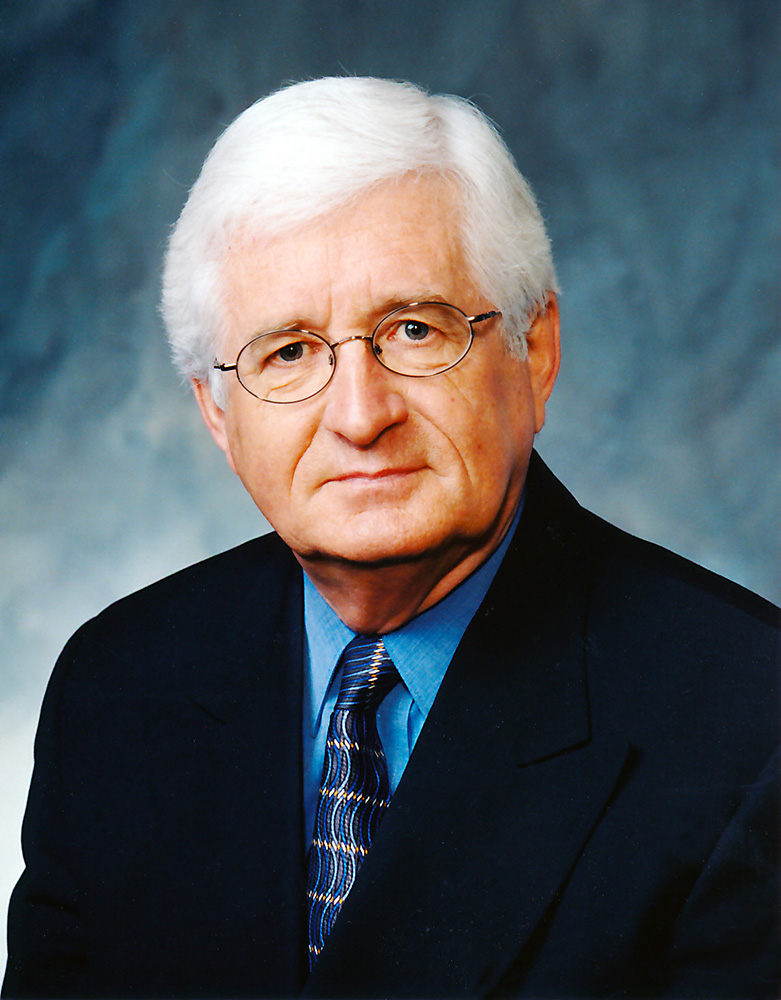
Mr. Jean Jolin27
- On November 3, 1999, Ms. Francine Barry becomes Chief Electoral Officer and Chair of the Commission de la représentation électorale for a six-month term. She serves until May 2, 2000.28 See table of election officials in Québec since 1945.
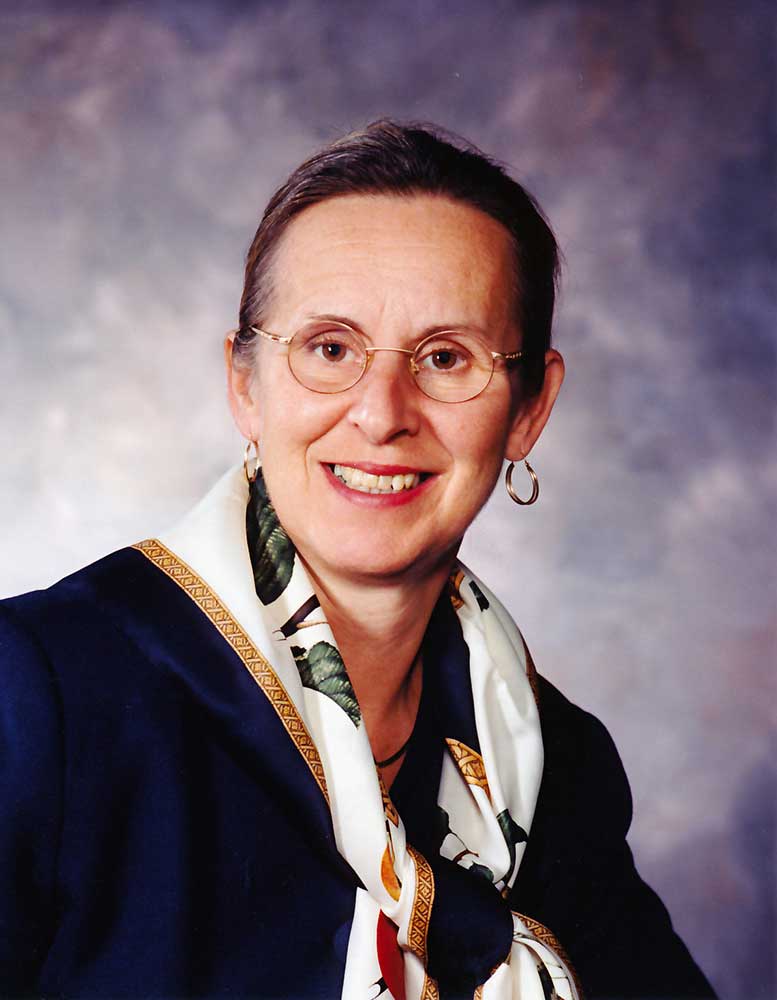
Ms. Francine Barry28
2000 to today
2000
- On May 3, 2000, Mr. Marcel Blanchet becomes Chief Electoral Officer and Chair of the Commission de la représentation électorale. He remains in office until December 31, 2010.29 See table of election officials in Québec since 1945.

Mr. Marcel Blanchet29
- From November 1 to November 3, 2000, the International symposium on the practices of democracy, rights and freedoms in the francophonie takes place in Bamako, Mali. The Assistant Chief Electoral Officer takes part in the deliberations and in the adoption of the Bamako Declaration. During this symposium, the idea of a group of francophone electoral management bodies (later created in 2011) is discussed, under the name of Réseau des compétences électorales francophones (RECEF).
- The Assemblée nationale assigns the Chief Electoral Officer of Québec the task of studying the feasibility of a digitized voter photo ID card. This study, in keeping with the desire to ensure the integrity of the electoral process, is tasked with presenting the advantages, disadvantages, costs, terms and conditions and timetable for the implementation of a voter card project. The study report, entitled Une carte d’électeur numérisée avec photo : de la faisabilité à l’opportunité (PDF – in French) and tabled in November 2001, concludes that it would be premature to proceed with a voter card project.
“The highly symbolic gesture of placing a ballot paper in the ballot box does not in itself reflect the essence of democracy. Living in a democracy is much more than that. It requires that individuals develop attitudes and behaviours that reflect a sense of civic responsibility, without which the democratic ideal cannot be achieved.”
2001
- It is now possible to make a contribution to a political party using a credit card.
- Municipal political contributions are now eligible for a tax credit.
- The limit on allowable election expenses at the municipal level increases by 20%.
- The Chief Electoral Officer of Québec supports the returning officers for the first municipal elections held in the new merged cities.
- A new electoral map, with electoral boundaries defined by the Commission de la représentation électorale, includes 125 electoral divisions and is used for the 2003, 2007 and 2008 general elections.30

2001 Electoral Map30
2002
- For the first time, the Chief Electoral Officer of Québec posts the list of donors that have made political contributions on its website.
- Following municipal elections, school elections are now supported by the Chief Electoral Officer of Québec. School elections also have their own funding rules.
2003
- In the provincial general election of April 14, 2003, there is a tie in the Champlain electoral division. This is the second time this happens in Québec history. Champlain voters return to the polls on May 20, 2003. During these general elections, there are 5,490,551 voters on the list of electors. Voter turnout is 70.42%.
- In the 2003 general school elections, voter turnout is 8.4%.
- On the 25th anniversary of the Act to govern the financing of political parties, the Chief Electoral Officer of Québec publishes an electoral study entitled Political Financing and Control of Election Expenses in Québec: Past and Present (PDF). This study intends to provide a tangible contribution and raise awareness of the Act, including its rules, values and principles.
- The Chief Electoral Officer of Québec publishes the Plan d’action 2003-2006 sur le financement des partis politiques et le contrôle des dépenses électorales (PDF – in French). As the administrator of the relevant legislative provisions, the Chief Electoral Officer feels it is appropriate to carry out an in-depth examination of its intervention.
2004
- In June, the Chief Electoral Officer of Québec holds 89 municipal referendum consultations in as many Québec municipalities. The purpose of the referendum is to allow citizens to express their views on the process of the municipal mergers that occurred a few years earlier. As a result of these referendums, 31 municipalities regain their former autonomy.
- The Chief Electoral Officer of Québec publishes a report entitled Améliorer l’accès au vote et favoriser son exercice (PDF – in French) to serve as a basis for legislative amendments.
2005
- The Chief Electoral Officer of Québec publishes the Recension des écrits sur la participation électorale (PDF – in French). The aim of this study is to educate people on voter participation.
- The first simultaneous general election for all Québec municipalities is held on November 6, 2005. Voter turnout for these elections is 45%. The number of political parties rises to nearly 200 and over 12,000 candidates run for election. The electronic voting system introduced by municipalities experiences difficulties and the government calls a moratorium on the use of this voting method.
2006
- Following the conclusions made during the Gomery Commission’s inquiry into the federal sponsorship scandal, the Chief Electoral Officer of Québec mandates Mr. Jean Moisan, a retired judge, to investigate illegal political financing allegedly received by provincial political parties. Mr. Moisan’s report (PDF – in French) is released in June 2006, and covers topics such as how financing schemes operate.
- Following the issues that arise from electronic voting in certain municipalities during the November 2005 municipal elections, the Chief Electoral Officer of Québec publishes the Rapport d’évaluation des nouveaux mécanismes de votation (PDF – in French).
2007
- In May 2007, Me Bernard Grenier produced an inquiry report into Option Canada’s activities during the 1995 referendum. This report follows a mandate given to him by the Chief Electoral Officer in January 2006, to shed light on the situation described in the book Les secrets d’Option Canada.
- For the first time in Québec’s electoral history, during the March 2007 general election, voters unable to move about for health reasons can vote in advance from home. Another first occurs during this general election: advance polling is held in health care facilities and seniors’ residenceslisted in the register of the Ministère de la Santé et des Services Sociaux. During these general elections, there are 5,630,567 voters on the list of electors. Voter turnout is 71.23%.
- The Chief Electoral Officer of Québec publishes the Rapport du Groupe de réflexion sur le financement des partis politiques (PDF – in French). This focus group, led by the Chief Electoral Officer of Québec and comprising representatives from the three political parties present in the Assemblée nationale, is set up by the Advisory Committee in the wake of the revelations made during the commission of inquiry chaired by Jurist John Gomery, which questions compliance with the funding rules in the Québec Election Act. This report proposes to tighten up Québec’s rules on contributions and election expenses.
- The Chief Electoral Officer of Québec becomes a partner of the Chaire de recherche sur la démocratie et les institutions parlementaires de l’Université Laval.
- The Government of Québec instructs the Chief Electoral Officer of Québec to examine a possible compensatory mixed voting system. The report, entitled Les modalités d’un mode de scrutin mixte compensatoire : L’avis du Directeur général des élections (PDF – in French), is published in December 2007.
- In the 2007 general school elections, voter turnout is 7.9%.
2008
The general election of December 2008 is marked by the lowest voter turnout in over 70 years, at 57.43%. Additionally, for the first time in a general election, electors are now permitted to vote at the office of their local returning officer or at a sub-office in the electoral district. Five days are added to the advance polling period. During these elections, there are 5,738,811 voters on the list of electors.
2009
General municipal elections are held on November 1, 2009. Voter turnout is 44.8%.
2010
- As a basis for further reflection on the financing of political parties, the Chief Electoral Officer of Québec asks the Institut du Nouveau Monde to suggest a method for consulting with the general public. The jury citoyen (PDF – in French) on political party financing is held in January 2010. The verdict: Companies and all other groups should not be allowed to make financial contributions to political parties. The Chief Electoral Officer of Québec welcomes this verdict rendered by a panel of twelve people selected to represent the general population of Québec.
- The Assemblée nationale adopts an important reform on the financing of political parties and authorized independent candidates. One of the three bills adopted is entitled the Act to put a stop to election contributions in the name of another. This reform reduces the maximum voter contribution at the provincial level from $3,000 to $1,000, introduces new criminal offences and substantially increases certain fines. Additionally, political contributions to provincial parties and candidates are now made directly to the Chief Electoral Officer of Québec.
2011
- On January 1, 2011, Mr. Jacques Drouin becomes Chief Electoral Officer and Chair of the Commission de la représentation électorale. He remains in office until July 11, 2014.31 See table of election officials in Québec since 1945.
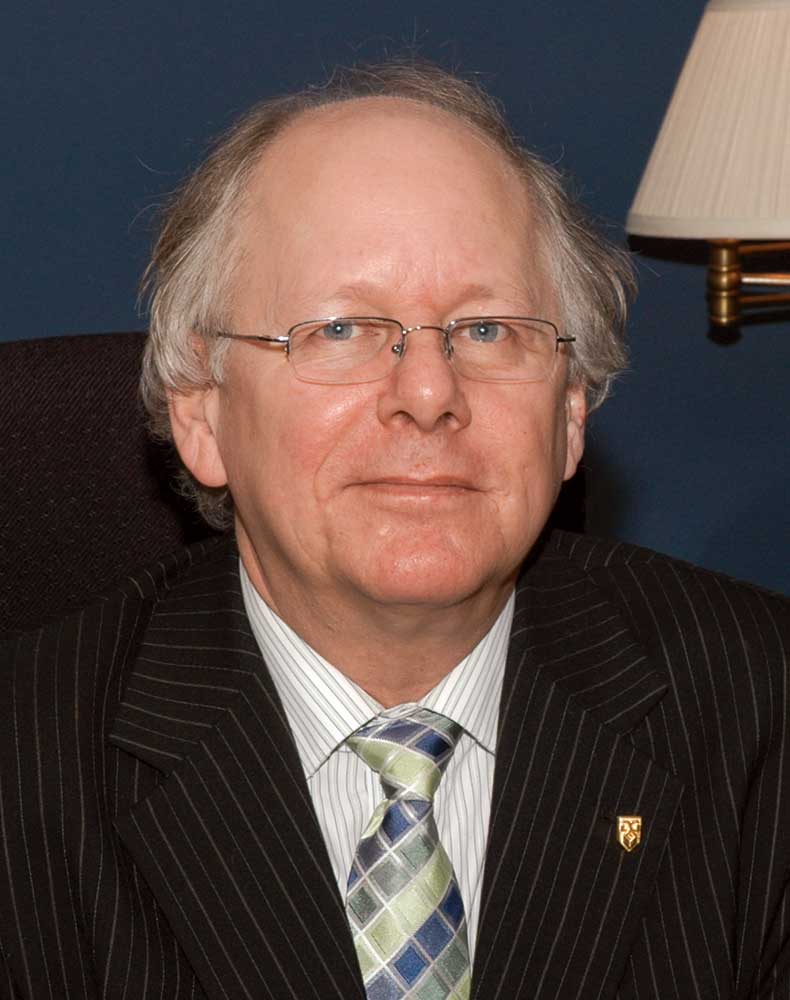
Mr. Jacques Drouin31
- The Chief Electoral Officer of Québec launches the first mobile version of its website. The mobile website is adapted for smart phones and tablets and is created entirely in-house by the institution’s employees.
- A new electoral map created by the Commission de la représentation électorale comprises 125 electoral divisions and is used for the 2012 and 2014 general elections.32
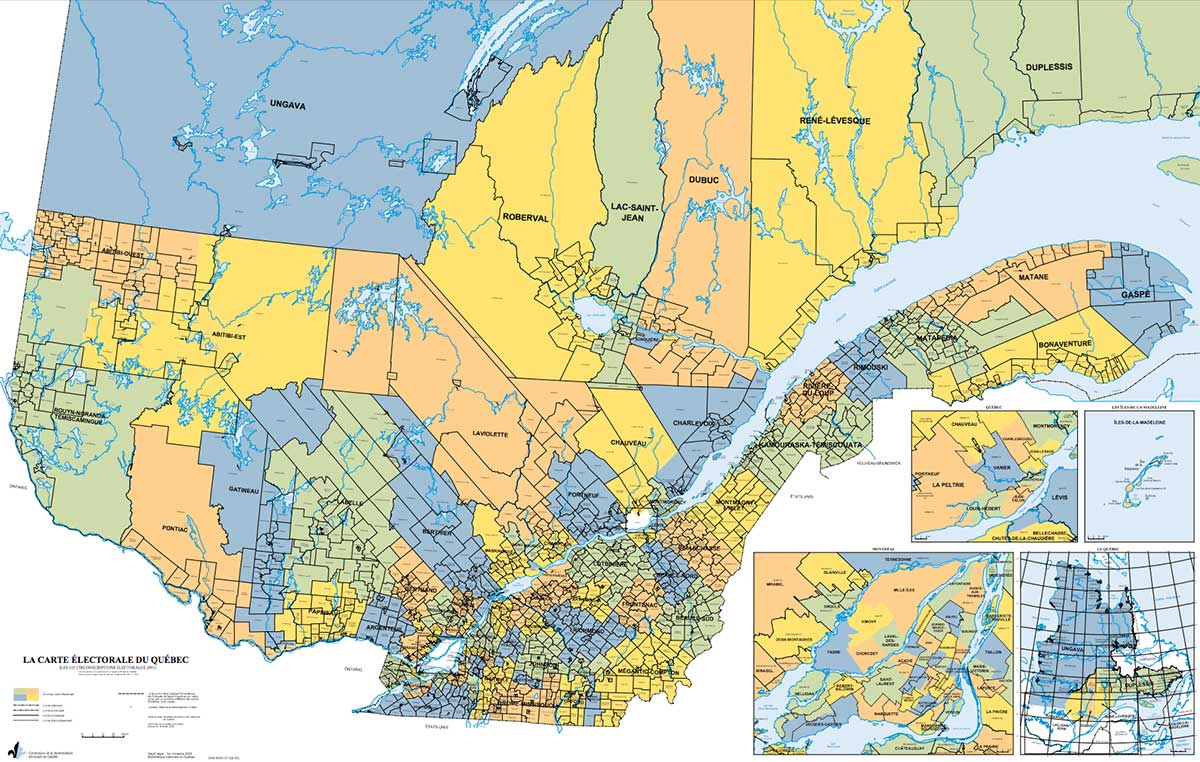
2011 Electoral Map32
- Since 2009, the Chief Electoral Officer of Québec has supported the referendum on the Agreement in principle concerning the creation of the Nunavik regional government. The referendum vote is held on April 27, 2011. The election report is published in English, French and Inuktitut.33
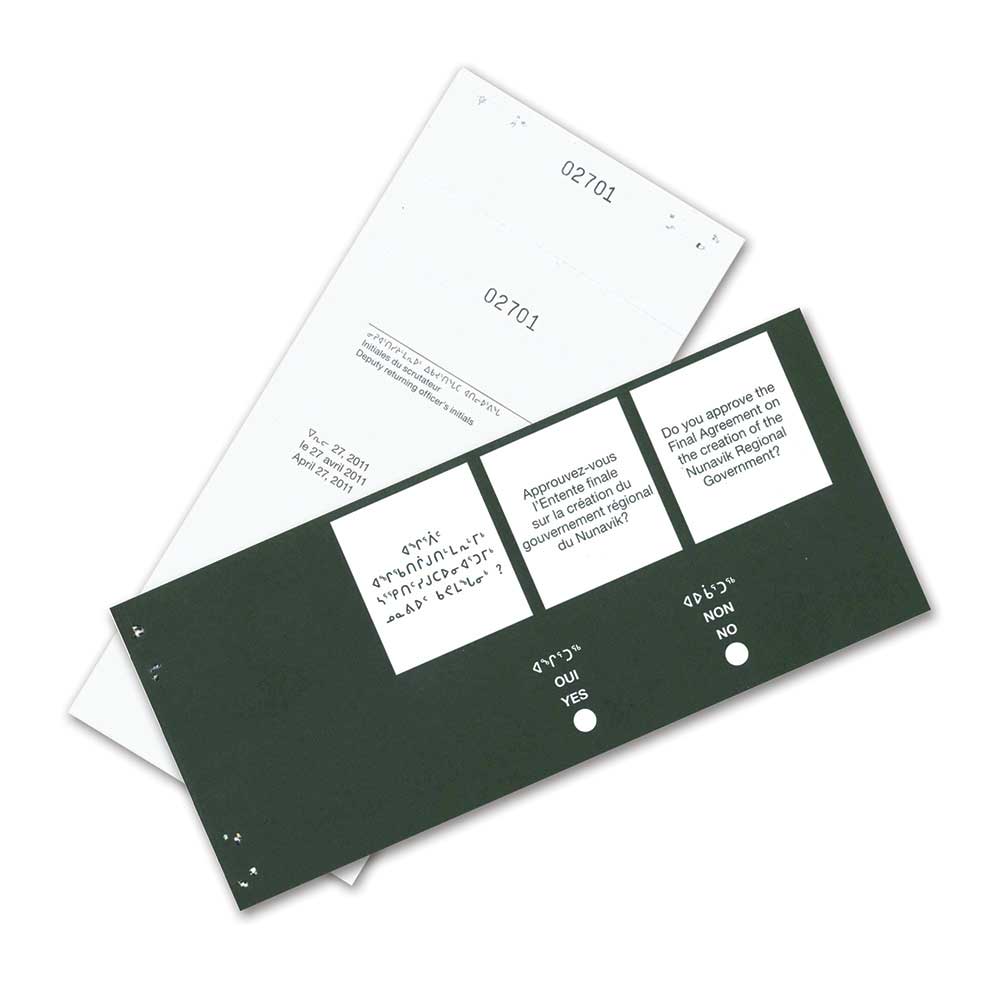
Ballot paper for the 2011 referendum33
- The Assemblée nationale adds provisions to the Election Act that introduce a legislative framework on financing candidates in a leadership race for a provincial or municipal political party. The Chief Electoral Officer of Québec is responsible for ensuring the proper application of these rules and posts information on contributions received by the candidates on its website.
- The Réseau des compétences électorales francophones (RECEF) is created in Québec City on August 24, 2011. The network brings together electoral commissions and administrations from the global francophone community and works with the Organisation internationale de la Francophonie by encouraging the exchange of best electoral practices. The RECEF’s head office and general secretariat are located in the office of the Chief Electoral Officer of Québec, in Québec City.34
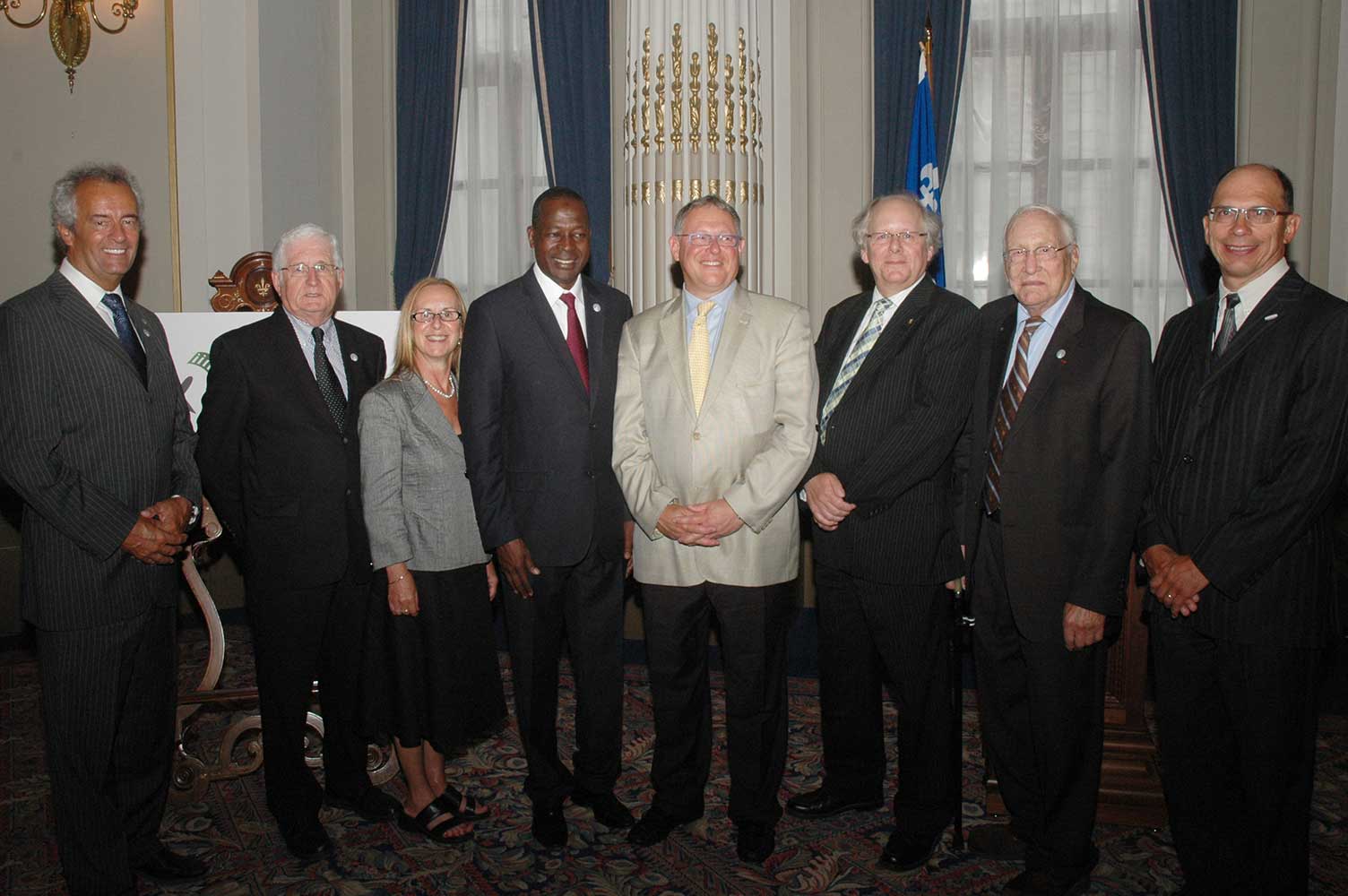
The Réseau des compétences électorales francophones (RECEF) is established. From left to right: Mr. Marcel Blanchet, Mr. Jean Jolin, Ms. Francine Barry, General Siaka Sangaré (General Delegate for Elections in Mali), Mr. Jacques Chagnon (President of the Assemblée nationale), Mr. Jacques Drouin, Mr. Pierre-F. Côté and Mr. François Casgrain34
2012
- The website is upgraded and adapted for mobile devices. Voters can now check their name on the list of electors and locate their polling station and revision office.
- The Chief Electoral Officer of Québec is now present on social media. Additionally, for the 2012 general election, a partnership with Twitter is established so that real-time results can be broadcast on election night.
- In the general election of September 2012, voters can vote from outside their electoral division. They can now vote for a candidate of their home electoral division in the division where they have temporary residence, regardless of where they are in Québec.
- Also, for the first time in a general election, the candidate’s photo is added next to their name on the ballot paper (this is first tested in three by-elections in 2011 and 2012). The photo makes it easier for electors to identify the candidate for whom they want to vote, especially since they also have access to a poster with the names and photographs of each candidate as they enter the polling station.35 Additionally, the circle on the ballot paper used to select the candidate is increased to 9 mm and the font used on the ballot paper is also bigger. These improvements are intended to improve visibility of the ballot paper for those with visual impairments, making it easier for them to exercise their right to vote.
- For these general elections, there are 5,919,808 voters on the list of electors. Voter turnout is 74.60%.

For the first time in a general election, the candidate’s photo is added next to their name on the ballot paper35
- The Chief Electoral Officer of Québec publishes an electoral study entitled Les modèles de financement public des partis politiques au Québec et dans d’autres démocraties : perspectives comparées (PDF – in French).
2013
- The Election Act (PDF)of June 2013, sets a fixed election date—the first Monday of October every four years. However, in the Assemblée nationale, the chamber must trust the government in power in order for the government to continue to exercise its power. This means that with both a minority or majority government, early elections are still possible.
- The Unité spéciale d’enquête—which would later become the Service des enquêtes—is established to monitor the auditing work done by the Chief Electoral Officer of Québec on sectoral financing.
- On April 3, 2013, the Chief Electoral Officer of Québec releases the results of audits that uncovered sectoral financing practices which benefit provincial and municipal political parties in Québec. “Sectoral financing” is when several electors, linked to the same company or business group, contribute to a political party. While this scheme appears legitimate, it is in fact similar to using nominees. In simple terms, it is when a company or group makes illegal financial contributions to a political party through its staff. Auditing begins in 2012 as agreed upon by the Chief Electoral Officer of Québec and the Agence du revenu du Québec. Findings would show that from 2006 to 2011, employees from 532 companies, associated with four business groups, as well as individuals related to these employees, contributed $12.8 million to political parties.
- Municipal general elections are held on November 3, 2013. Voter turnout is 47.2%.
- In December, the Chief Electoral Officer of Québec cohosts the 35th Conference of the Council on Governmental Ethics Laws(COGEL) in Québec City as a member of the program and as a part of the host committee.
2014
- On April 7, 2014, the 19th provincial general elections since 1945 are organized by the Chief Electoral Officer of Québec. During these elections, there are 6,012,440 voters on the list of electors. Voter turnout is 71.44%. Approximately 80,000 people are hired to work on organizing the election.

For the 2014 general election, the Information Centre staff increases from 5 to 60 clerks for the general election period36
- A new feature is introduced to the elections on April 7, 2014: students can now vote at their educational establishment.
- Because it is an election year, authorized political parties and independent candidates receive additional public funding for the first time.
- During the April 7, 2014, general elections, the institution hosts a delegation from the Réseau des compétences électorales francophones (RECEF) as part of an immersion and exchange program in electoral processes. This event provides an opportunity for twelve representatives from eight election management bodies in the francophone community to deepen their knowledge of Québec’s electoral and political system and exchange best practices among election administration professionals.
- In the 2014 general school elections, voter turnout is 5.5%.
- On July 12, 2014, Ms. Lucie Fiset becomes Chief Electoral Officer and Chair of the Commission de la représentation électorale for a six-month term. This mandate is renewed once, with Ms. Lucie Fiset serving until July 11, 2015.37 See table of election officials in Québec since 1945.

Ms. Lucie Fiset37
- In September, to commemorate the 30th anniversary of the September shooting at the Assemblée nationale, during which Mr. Roger Lefrançois, an employee of the Chief Electoral Officer of Québec, lost his life, a plaque in memory of the victims is put up in the Parliament building.38
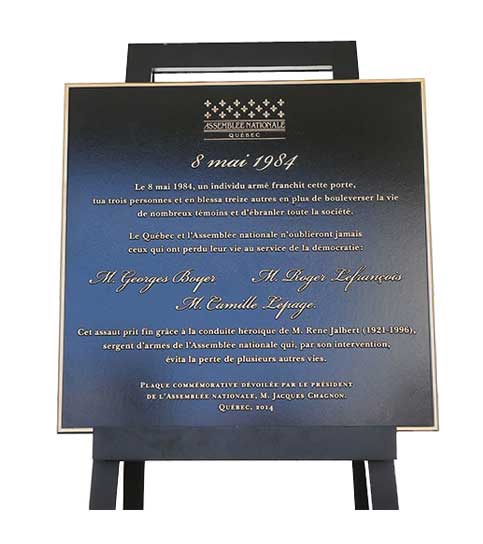
Commemorative plaque to honour the victims of the shooting at the Assemblée nationale38
- The Chief Electoral Officer of Québec publishes an electoral study entitled Femmes et politique : facteurs d’influence, mesures incitatives et exposé de la situation québécoise (PDF – in French).
- The Chief Electoral Officer of Québec publishes the Rapport sur la mise en œuvre de la réforme des lois en matière de financement politique et de contrôle des dépenses électorales (PDF – in French) for the period of May 1, 2011, to April 30, 2014.
2015
- In June 2015, the Chief Electoral Officer of Québec signs an agreement with the Assemblée nationale and the Fondation Jean-Charles-Bonenfant to implement the Vox populi : Ta démocratie à l’école This program aims to encourage, value and support the participation of elementary and secondary school students in democracy life in their schools. It targets Québec schools and includes a training program for student council members.
- On July 12, 2015, Mr. Pierre Reid becomes Chief Electoral Officer and Chair of the Commission de la représentation électorale. He remains in office until January 15, 2023.39 See table of election officials in Québec since 1945.
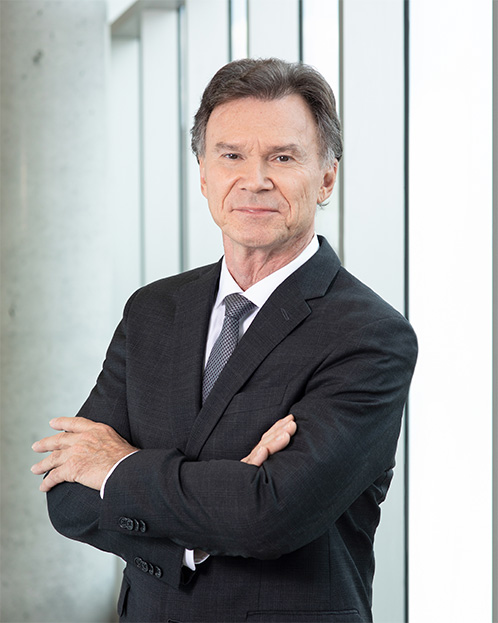
Mr. Pierre Reid39
2016
In 2016, Bill 83—Act to amend various municipal-related legislative provisions on matters like political financing—is passed.
2017
- In June, a new electoral map is established up by the Commission de la représentation électorale. It includes 125 electoral divisions and is used for the 2018 elections and subsequent elections.
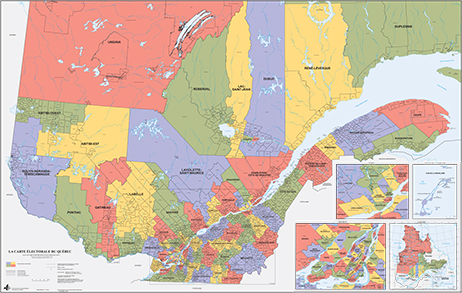
2017 Electoral Map
- Municipal general elections are held on November 5, 2017. Voter turnout is 44.8%.
- On November 10, 2017, the Chief Electoral Officer establishes a Citizen round table that aims to encourage citizen participation and provide food for thought on electoral matters. The role of the members of the Citizen round table is to give their opinion, in an impartial and non-partisan manner, on matters relating to the Québec electoral system, with the interest of the Québec population in mind.

2018
- In February 2018, our institution changes its visual identity to become Élections Québec. This change allows us to adopt:
- A visual signature that better conveys our primary mission and reflects our values of rigour, integrity, credibility, transparency and neutrality.
- An identity that distinguishes the institution from the office of the Chief Electoral Officer, the person appointed by the Assemblée nationale and the individual responsible for enforcing electoral laws.

In February 2018, our institution changes its visual identity to become Élections Québec
- On October 1, 2018, Élections Québec holds general elections, the first to be held on a fixed date. Moreover, for the first time in history, small polling stations are set up across Québec, allowing children to vote, alongside their parents, on an issue related to democratic values. This new educational initiative on democracy is a huge success. In these general elections, there are 6,169,772 voters on the list of electors. Voter turnout is 66.45%.
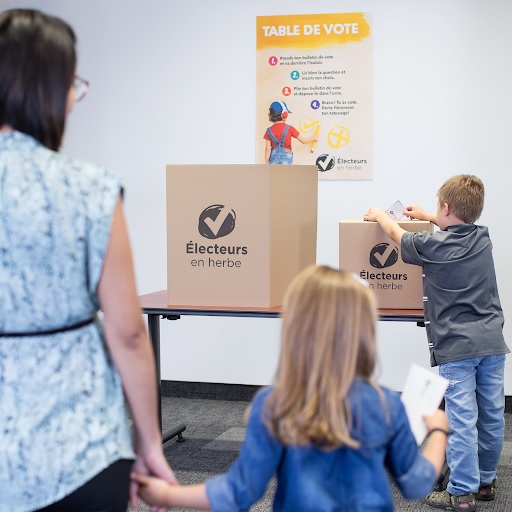
The small polling stations allowed children to fill out a ballot paper and to better understand how our democratic system works40
- From September 29 to October 2, Élections Québec organizes a visit program for the Québec general election. Thirteen election management representatives from across the Francophonie as well as eight representatives from electoral administrations in Canada and two representatives from the Organisation internationale de la Francophonie (OIF) and the International Foundation for Electoral Systems (IFES) travel to Québec City to learn more about Québec’s electoral system and how Québec elections are managed. This provides an excellent opportunity for election administrators from the greater Francophonie and from Canada to share ideas.
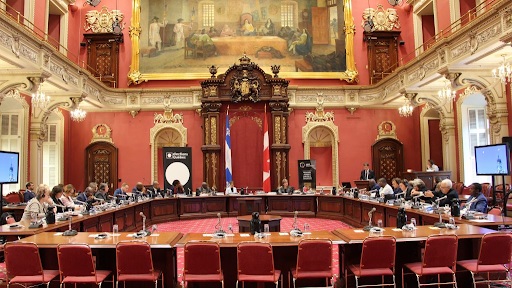
Opening session in the Legislative Council Chamber of the Assemblée nationale du Québec41
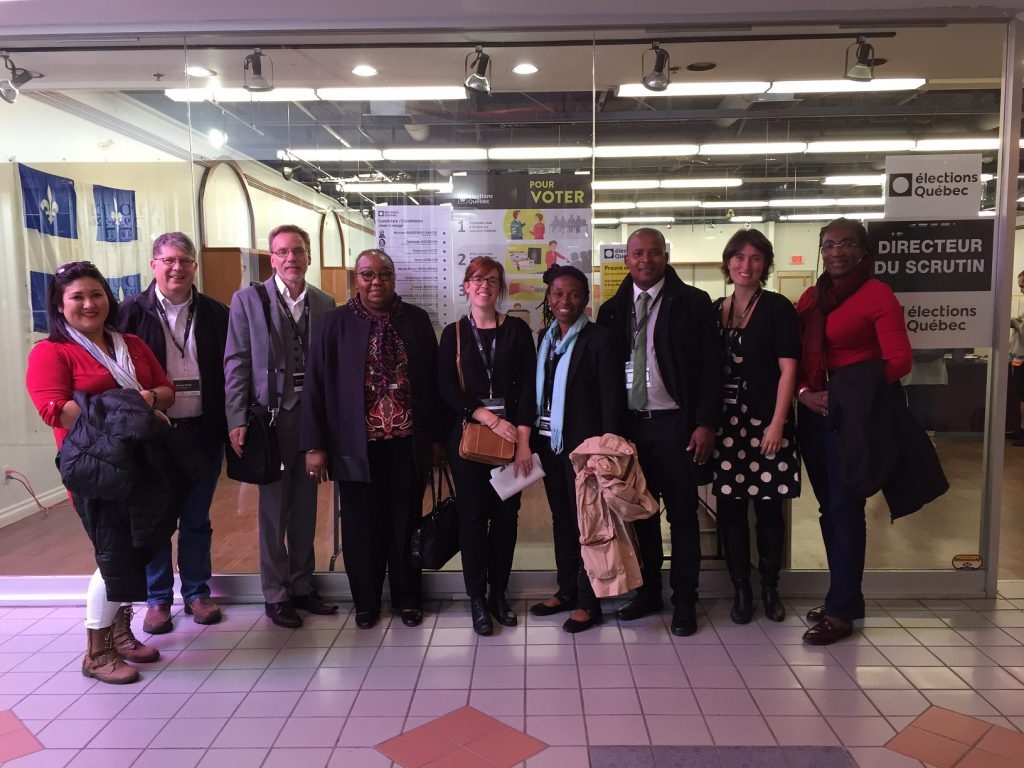
A team visits the office of the returning officer of the electoral district of Jean-Lesage42
2019
- On September 25, the government introduces Bill 39, An Act to establish a new voting system. This bill needs to be approved by way of a referendum in the general election following its adoption. The Chief Electoral Officer takes part in the public hearings of this bill and submits a brief that expresses some of his thoughts and recommendations.
- On October 1, the government introduces Bill 40, An Act to amend mainly the Education Act with regard to school organization and governance. In essence, the Act provides for the conversion of school boards into school service centres and replaces elected school trustees by boards of trustees. From this point on, only certain administrators from English-language school service centres will be elected by universal suffrage. Bill 40 is passed on February 8, 2020.
2020
- Since 1980, the Chief Electoral Officer of Québec has participated in more than 450 international activities, including electoral assistance and observation missions. It has also welcomed foreign delegations wishing to increase their knowledge of Québec’s electoral system.43
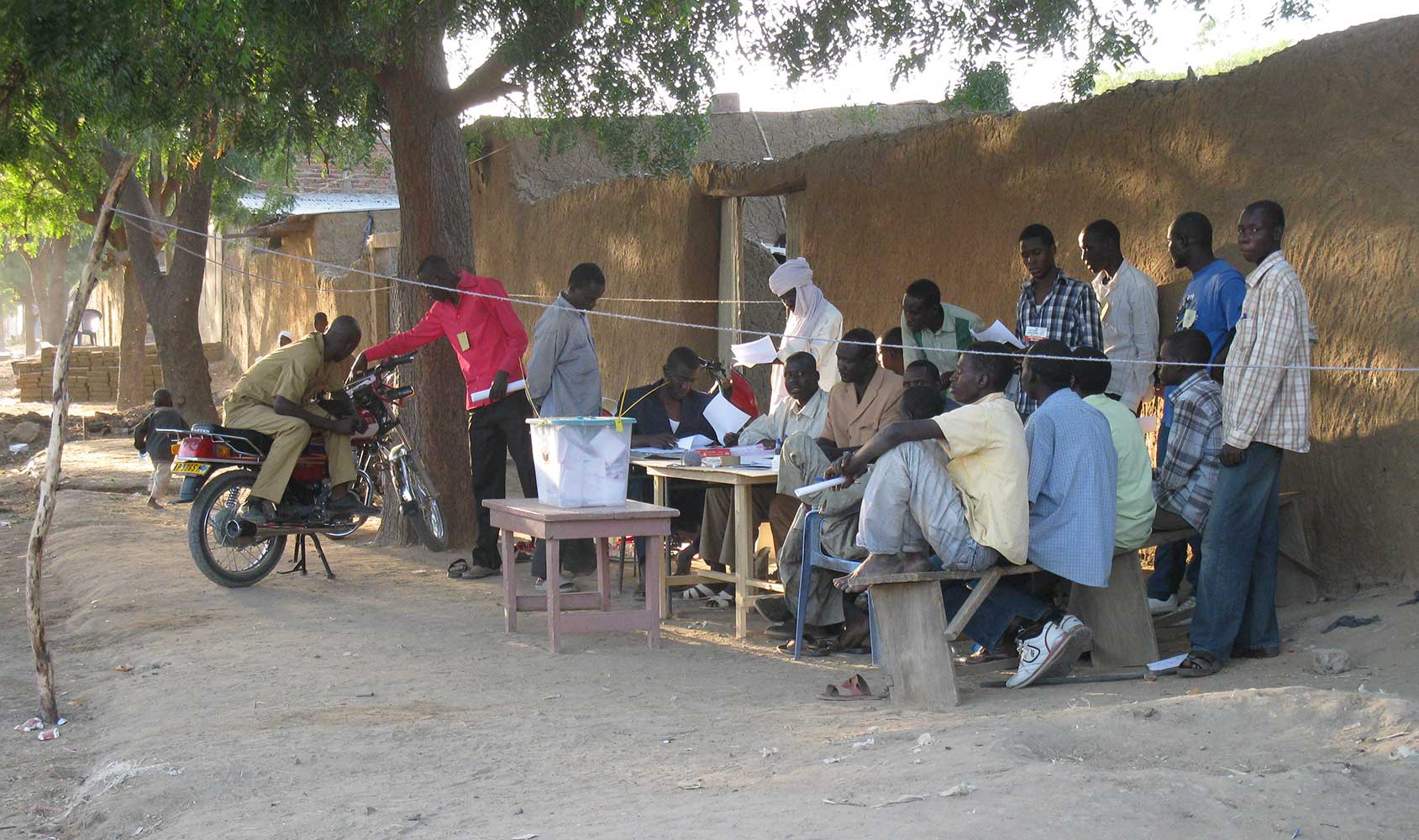
Polling station in Chad in 201143
2021
- In December 2021, Élections Québec moved into new offices at 1045 Wilfrid-Pelletier Avenue in Québec. As a result, all the institution’s staff members now work out of the same building.
- Municipal general elections are held on November 7, 2021. Voter turnout is 38.7%.
2022
- Élections Québec holds a general election on October 3, 2022. For the first time, 16- and 17-year-olds have the opportunity to work in these elections. Our institution also created an account on TikTok to encourage young people to vote. 6,302,789 electors are entered on the list of electors. Voter turnout is 66.15%.
2023
- On January 16, 2023, Mr. Jean-François Blanchet becomes Chief Electoral Officer and Chair of the Commission de la représentation électorale.44 See table of election officials in Québec since 1945.
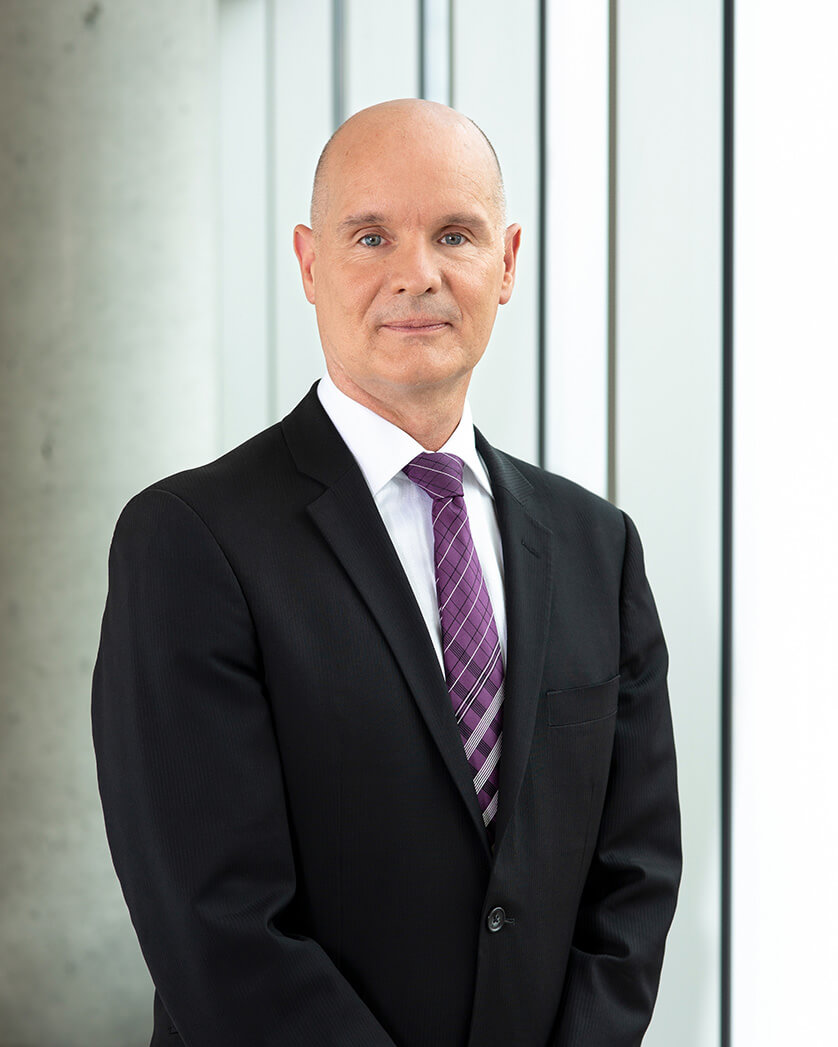
Mr. Jean-François Blanchet44
- ASSEMBLÉE NATIONALE DU QUÉBEC. Par ici la démocratie : ligne du temps. www.paricilademocratie.com.
- ASSEMBLÉE NATIONALE DU QUÉBEC. Directeur général des élections. https://www.assnat.qc.ca/fr/patrimoine/lexique/directeur-general-des-elections.html.
- BORDELEAU, Francine. Financement des partis politiques et contrôle des dépenses électorales : d’hier à aujourd’hui, Collection Études électorales, Québec, Le Directeur général des élections du Québec, 2003, 80 p. https://docs.electionsquebec.qc.ca/ORG/4577e616c20be/DGE-6350.8.pdf (PDF).
- DIRECTEUR GÉNÉRAL DES ÉLECTIONS DU CANADA. L’histoire du vote au Canada. https://www.elections.ca/content.aspx?section=res&dir=his&document=index&lang=f.
- DIRECTEUR GÉNÉRAL DES ÉLECTIONS DU QUÉBEC. Premier rapport annuel, Québec, Le Directeur général des élections du Québec, 1980, 77 p.
- DIRECTEUR GÉNÉRAL DES ÉLECTIONS DU QUÉBEC. Rapport annuel de gestion 2007-2008, Québec, Le Directeur général des élections du Québec, 2008, 113 p.
- DIRECTEUR GÉNÉRAL DES ÉLECTIONS DU QUÉBEC. Rapport annuel de gestion 2009-2010, Québec, Le Directeur général des élections du Québec, 2010, 137 p.
- DIRECTEUR GÉNÉRAL DES ÉLECTIONS DU QUÉBEC. Rapport annuel de gestion 2011-2012, Québec, Le Directeur général des élections du Québec, 2012, 129 p.
- DIRECTEUR GÉNÉRAL DES ÉLECTIONS DU QUÉBEC. Rapport annuel de gestion 2012-2013, Québec, Le Directeur général des élections du Québec, 2013, 143 p.
- DIRECTEUR GÉNÉRAL DES ÉLECTIONS DU QUÉBEC. Album souvenir : 50 ans au cœur de la démocratie, Québec, Le Directeur général des élections du Québec, 1997, 37 p.
- DIRECTEUR GÉNÉRAL DES ÉLECTIONS DU QUÉBEC. 60 ans de conquêtes démocratiques, Québec, Le Directeur général des élections du Québec, 2005, 4 p.
- DIRECTEUR GÉNÉRAL DES ÉLECTIONS DU QUÉBEC. www.electionsquebec.qc.ca.
- DIRECTEUR GÉNÉRAL DES ÉLECTIONS DU QUÉBEC. Éduquer à la citoyenneté : agir pour la démocratie! : actes du colloque tenu à Québec le 10 novembre 2000, Québec, Le Directeur général des élections du Québec, 2001, 81 p. https://docs.electionsquebec.qc.ca/ORG/616717866f432/DGE-6362.pdf (PDF).
- DIRECTEUR GÉNÉRAL DES ÉLECTIONS DU QUÉBEC. Améliorer l’accès au vote et favoriser son exercice : une proposition du Directeur général des élections du Québec, Québec, Le Directeur général des élections du Québec, 2004, 206 p. https://docs.electionsquebec.qc.ca/ORG/6140ff69cd3b6/ameliorer-acces-vote.pdf (PDF).
- DIRECTEUR GÉNÉRAL DES ÉLECTIONS DU QUÉBEC. Allocution prononcée par Me Pierre F. Côté, à l’occasion du lancement des deux premiers numéros de « La revue électorale », dans le cadre des célébrations du bicentenaire des institutions parlementaires du Québec, Québec, May 29, 1992.
- LACOURSIÈRE, Jacques, Jean PROVENCHER et Denis VAUGEOIS. Canada-Québec : Synthèse historique, Montréal, Éditions du Renouveau pédagogique, 1977, 625 p.
- LADNER, Kiera L. et Michael MCCROSSAN. La participation des Autochtones aux élections, Ottawa, Le Directeur général des élections du Canada, 2007, 44 p. https://www.elections.ca/res/rec/part/paper/aboriginal/aboriginal_f.pdf (PDF).
- MERCIER, Benoît et André DUHAMEL. La démocratie : ses fondements, son histoire et ses pratiques [2e édition], Québec, Le Directeur général des élections du Québec, 2005, 166 p.
- PERREAULT, Charlotte et Madeleine ALBERT. Cinquante ans au cœur de la démocratie : Le Directeur général des élections et l’évolution de la législation électorale de 1945 à 1995, Collection Études électorales, Québec, Le Directeur général des élections du Québec, 1996, 53 p.
- PUBLICATIONS DU QUÉBEC. Loi régissant le financement des partis politiques. https://legisquebec.gouv.qc.ca/fr/ShowDoc/cs/F-2.
- PUBLICATIONS DU QUÉBEC. Loi électorale. https://legisquebec.gouv.qc.ca/fr/ShowDoc/cs/E-3.3.
- RÉSEAU DES COMPÉTENCES ÉLECTORALES FRANCOPHONES. http://recef.org.
- 1 City of Montréal Archives, file number SA M001 BM 007-2-D24-P002
- 2 City of Montréal Archives, file number P1672
- 3 Bibliothèque et Archives nationales du Québec, file number P560,S2,D1,P241
- 4 DGE fund: text document
- 5 DGE fund: unidentified photographer
- 6 Archives nationales du Québec – Laurent Massicotte Series – Photo: Kennedy
- 7 DGE fund: text document
- 8 DGE fund: text document
- 9 DGE fund: photographer: André Larose
- 10 DGE fund: photographer: Official publisher of Québec
- 11 DGE fund: text document
- 12 DGE fund: unidentified photographer
- 13 DGE fund: unidentified photographer
- 14 DGE fund: unidentified photographer
- 15 DGE fund: text document
- 16 DGE fund: unidentified photographer
- 17 DGE fund: text document
- 18 DGE fund: photographer: Patrick Dion
- 19 DGE fund: text document
- 20 DGE fund: unidentified photographer
- 21 DGE fund: photographer: Jacques Lessard Photographe
- 22 DGE fund: text document
- 23 DGE fund: text document
- 24 DGE fund: text document
- 25 DGE fund: photographer: Guy Raymond Photographe
- 26 DGE fund: photographer: Guy Raymond Photographe Designer
- 27 DGE fund: photographer: Daniel Létourneau
- 28 DGE fund: photographer: Studio Henri Inc.
- 29 DGE fund: photographer: John Redmond
- 30 DGE fund: text document
- 31 DGE fund: photographer: John Redmond
- 32 DGE fund: text document
- 33 DGE fund: text document
- 34 DGE fund: unidentified photographer
- 35 DGE fund: photographer: John Redmond
- 36 DGE fund: text document
- 37 DGE fund: photographer: John Redmond
- 38 Assemblée nationale du Québec
- 39 DGE fund: photographer: Frédéric Lavoie
- 40 DGE fund: unidentified photographer
- 41 DGE fund: photographer: Camille Brunelle-Hamann
- 42 DGE fund: photographer: Patrick Giasson
- 43 DGE fund: photographer: Jean-François Blanchet
- 44 DGE fund: photographer: @fredphotographe

